CHANEL, Major Partner of the Festival since 2014
In 2014, CHANEL strengthened its links with the Villa Noailles and its ongoing commitment to creativity and the avant-garde, by becoming a Major Partner of the International Festival of Fashion, Photography and Accessories – Hyères. This annual event, established in 1985, celebrates and rewards young fashion designers. In 2015, CHANEL was guest of honour at the 30th edition of the festival: Karl Lagerfeld as Artistic Director and Virginie Viard, then Director of the CHANEL Creation Studio (now Artistic Director of the Fashion Collections), chaired the festival’s fashion jury.
Since then, CHANEL has awarded prizes every year to the winners of the Fashion, Photography and Accessories competitions. The winners of the Grand Prix of the Jury Première Vision and the Grand Prix of the Accessories Jury, each receive a grant of 20,000 euros for the creation of a new design project with the Métiers d’art of their choice, to be unveiled the following year. CHANEL is once again partnering with the Grand Prix of the Photography Jury – now the 7L Photography Grand Jury Prize – with a grant of 20,000 euros for the winner. Acquired in 2021 by CHANEL, 7L was founded in 1999 by Karl Lagerfeld in Paris. 7L stands for 7, rue de Lille, in the 7th arrondissement of Paris, and for Karl Lagerfeld’s lucky number.
In line with this partnership, CHANEL is also the Official Partner of the make-up booth for the festival’s runway shows.
This year, CHANEL is Major Patron of the Villa Noailles Centenary. Throughout 2023, numerous events have been organised at the Villa Noailles and beyond, notably in June during Design Parade Hyères and Design Parade Toulon, and in October during the Festival.
This 38th edition of the event will be marked by the inauguration of a brand new exhibition devoted to Marie-Laure de Noailles’ wardrobe, from 12th October 2023 to 14th January 2024. Three CHANEL outfits owned by the viscountess have been recreated thanks to the House archives and will be on display.
le19M, Major Partner of the festival since 2020
Since 2019, le19M Métiers d’art Prize has rewarded the best collaboration between the ten finalists of the Fashion Prize and the fashion Métiers d’art. The name of this prize echoes le19M, which became a Major Partner of the festival alongside CHANEL in 2020. Located at Porte d’Aubervilliers in Paris, this new site, designed by CHANEL, brings together eleven maisons d’art and la Galerie du 19M, promoting the fashion and decoration Métiers d’art to the general public. Nearly six hundred artisans and experts serve the creativity of French and international brands, large groups and independent clients as well as the younger generation of designers.
This year, Alec Bizby (UK) collaborated with leather goods manufacturer Ateliers de Verneuil-en-Halatte, Bo Kwon Min (South Korea) with Flou specialist Paloma, Fengyuan Dai (France) with glovemaker Causse, Igor Dieryck (Belgium) with feather and flower designer Lemarié, Jung-Eun Lee (South Korea) with goldsmith Goossens, Leevi Ikäheimo (Finland) with milliner and hatter Maison Michel, Marc Sanz Pey (Spain) with embroiderer Atelier Montex, Norman Mabire-Larguier (France) with pleater Lognon, Petra Fagerstrom (Sweden) with embroiderer Lesage, and Tiago Bessa (Portugal) with parurier Desrues. All their creations will be shown at the two shows on 13th and 14th October. The winner of this prize will receive 20,000 euros for a new design project with the Maisons d’art of their choice, to be unveiled at the next edition of the festival.
Exhibitions of the 2021 winners and 2022 finalists
Festivalgoers will have the opportunity to discover the creations of last year’s winners, made in collaboration with the Métiers d’art of their choice thanks to the prize money they received.
Jenny Hytönen, winner of the 2022 Première Vision Grand Jury Prize, chose to collaborate this year with embroiderer Lesage and flou specialist Paloma. Joshua Cannone, winner of the 2022 Accessories Grand Jury Prize, has collaborated with embroiderer Montex and leatherworker Ateliers de Verneuil-en-Halatte. Valentin Lessner, winner of the 2022 le19M des Métiers d’art Prize for his collaboration with Montex, chose Les Ateliers de Verneuil-en-Halatte and the goldsmith Goossens.
The pieces designed by Jenny Hytönen were revealed at the end of the shows on 13th and 14th October. They were also presented to the public in the Villa Noailles gymnasium throughout the festival, alongside creations by Joshua Cannone and Valentin Lessner.
le19M presents a Lemarié workshop at the Hyères Festival
Alongside the exhibition presented by Stéphane Ashpool at the Villa Noailles as part of the 38th Festival of Fashion, Photography and Fashion accessories, Hyères, le19M is organising a collaborative workshop for all festival-goers. Conceived by the fashion designer with Lemarié—a company specialising in the art of Feathers, Flowers, Pleats, Needlework, and Textile finishing—it will take place from 12–15 October 2023.
In Hyères, the collaborative workshop invites participants to try their hand at the layered feathers. Accompanied by Lemarié’s featherwork artists, they will be invited to discover the different techniques for applying feathers and pongee, a light, supple silk taffeta. The panel created during the workshop in Hyères will be a precursor to a monumental work that will be completed by the public as part of the exhibition presented by la Galerie du 19M in Paris/Aubervilliers, from March to June 2024, on arts and crafts, movement, and sport, with Stéphane Ashpool as the guest of honour.
The L’Atelier des Matières Prize
Established in 2019 on CHANEL’s initiative, L’Atelier des Matières adds value to unused materials as well as unsold or unused manufactured products from the Fashion and luxury sectors, and supports circular transformation in the textile and leather goods industry for the brands it accompanies.
Thanks to the expertise of its “valuers”, L’Atelier des Matières collects Ready-to-Wear products, leather goods and small leather goods, shoes, as well as unused materials: threads and textiles, chains or metal elements, buttons and pouches, leather, and skins. L’Atelier supports the training of valuers, developing their disassembly and transformation expertise.
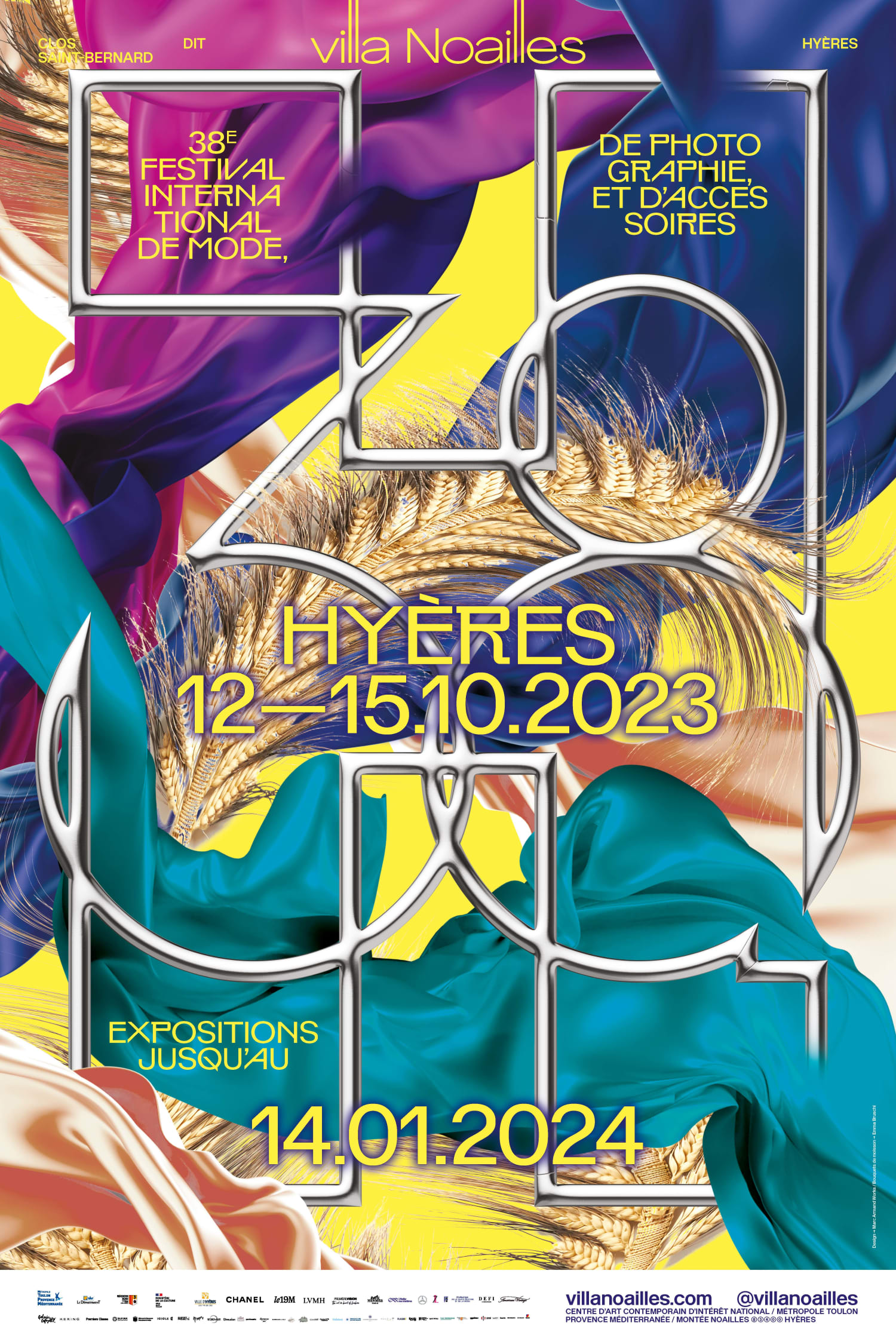
Once the materials or products have been received in the Oise region, they are sorted, disassembled, extracted and transformed by L’Atelier des Matières to give them a new life: thanks to this eco-friendly approach, these resources are then either given back to the supplying client or resold to other clients. L’Atelier des Matières provides quality and recycled materials, relying on complete traceability of the resources entrusted to it, as well as on the confidentiality and security of its eco-responsible transformation chain. Attentive to specific projects, the company customises its recuperation, transformation and design services to the needs of each creator or supplier.
Committed to the research and development of sustainable solutions that will accompany tomorrow’s generations, L’Atelier des Matières became a partner of the International Festival of Fashion, Photography and Accessories – Hyères in 2022. For the second consecutive year the L’Atelier des Matières prize will be awarded to one of the Fashion prize finalists for the creation of a look using materials provided by the atelier. The designs created by the ten Fashion prize finalists will be presented during two dedicated shows and in the festival showrooms. A selection of fabrics and leathers worth €10,000 from L’Atelier des Matières will be made available to the winner.
The year 2023 marks the centenary of the start of the Villa Noailles’ construction, designed by architect Robert Mallet-Stevens for the patron couple Viscount Charles and Marie-Laure de Noailles. This legendary residence, a masterpiece of modern architecture located up in the hills of Hyères, in the south of France, was awarded the “contemporary art centre of national interest” label in 2017. Today it is involved in a cultural programme of worldwide renown, including the International Festival of Design – Design Parade Hyères and the International Festival of Interior Design – Design Parade Toulon in June and the International Festival of Fashion, Photography and Accessories – Hyères in October.
CHANEL and the Villa Noailles have a long-standing relationship, initiated by Gabrielle Chanel in the first half of the last century. Close to the avant-garde, the couturière and the couple moved in the same artistic circles. Charles and Marie-Laure supported numerous avant-garde artists from all disciplines. Like Gabrielle Chanel, they were friends with Pablo Picasso, Alberto Giacometti, Igor Stravinsky, Jean Cocteau and Man Ray. A client of the House from the 1920s until the end of the 1960s, Marie-Laure de Noailles regularly wore Gabrielle Chanel’s Haute Couture creations: suits, dresses in lace, piqué or crêpe georgette. Inspired by the avant-garde architecture of the Villa Noailles, Karl Lagerfeld devoted a series of photographs to this exceptional residence in the summer of 1995.
The 2023 finalists
Alec Bizby
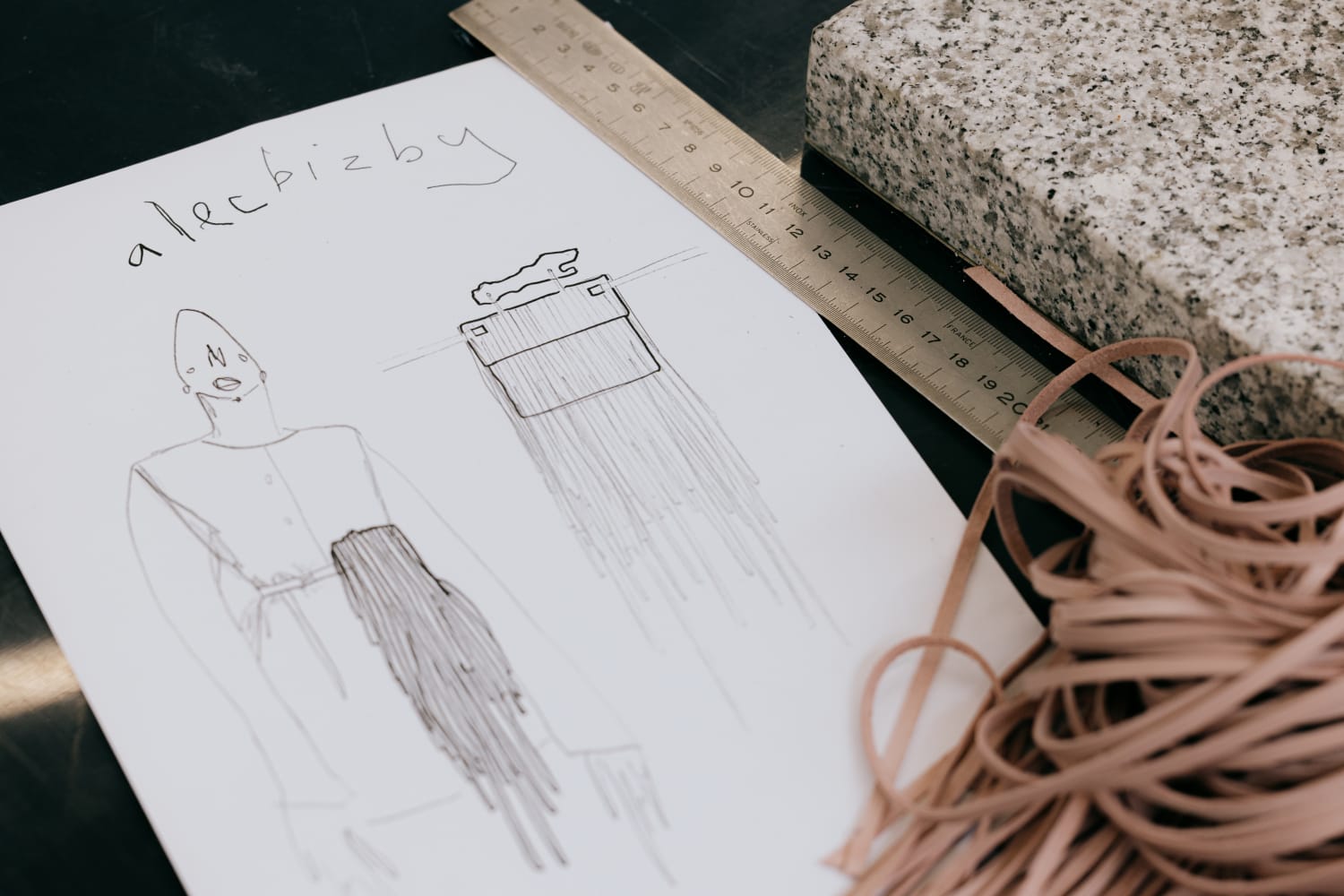
London-based Welsh designer Alec Bizby graduated from Central Saint Martins in 2022. His sensible and sensitive universe explores different concepts including folklore, paganism and masculinity. His collection, entitled « D WI YMA », was inspired by the emotions he felt during the last two weeks of his father’s life, before his demise last year on the family farm in the heart of the Brecon Beacons in Wales. The designer has reappropriated this painful experience through a creative prism, with the starting point of his collection being a traditional Welsh woven blanket inherited from his family. By remaking it into a coat and patchwork quilt, it demonstrates Alec Bizby’s commitment to eco-responsible fashion. All the materials in his collection are recycled, having been donated by the festival’s partners or taken from previous creations.
For his project with the leather goods maker Ateliers de Verneuil-en-Halatte as part of le19M Métiers d’art prize, the designer imagined two bags composed of leather offcuts from the factory. The first is a fringed black bag with a handle crafted from a piece of wood his father had found and kept. The second is a pink shoulder bag with a sculpted resin handle that evokes the hawthorn growing around his family’s mountain-top farm. The long fringes seem to float in the wind; the different shades of pink blend and merge – in an echo of the climatic conditions of his region.
For the L’Atelier des Matières prize, the techniques of patching work uniforms and sashiko – a Japanese hand-embroidery technique used to repair used garments – inspired him to create a handmade embroidery using mohair. The designer has completely deconstructed the fabric and reworked the threads into fringes at the bottom of shorts and on the sleeves of a jumper. Once tied together, the threads are machine-knitted to highlight the neckline.
Ateliers de Verneuil-en-Halatte
Since 1990, Ateliers de Verneuil-en-Halatte, deployed over 21,000 m2 in a small town of the same name to the north of Paris, have taken care of the development and the manufacture of CHANEL bags. All the artisans – cutters, assemblers, patternmakers, fitters, stitchers and, of course, leatherworkers – trained at Ateliers de Verneuil-en-Halatte perpetuate a heritage that is as much cultural as it is technical.
Bo Kwon Min
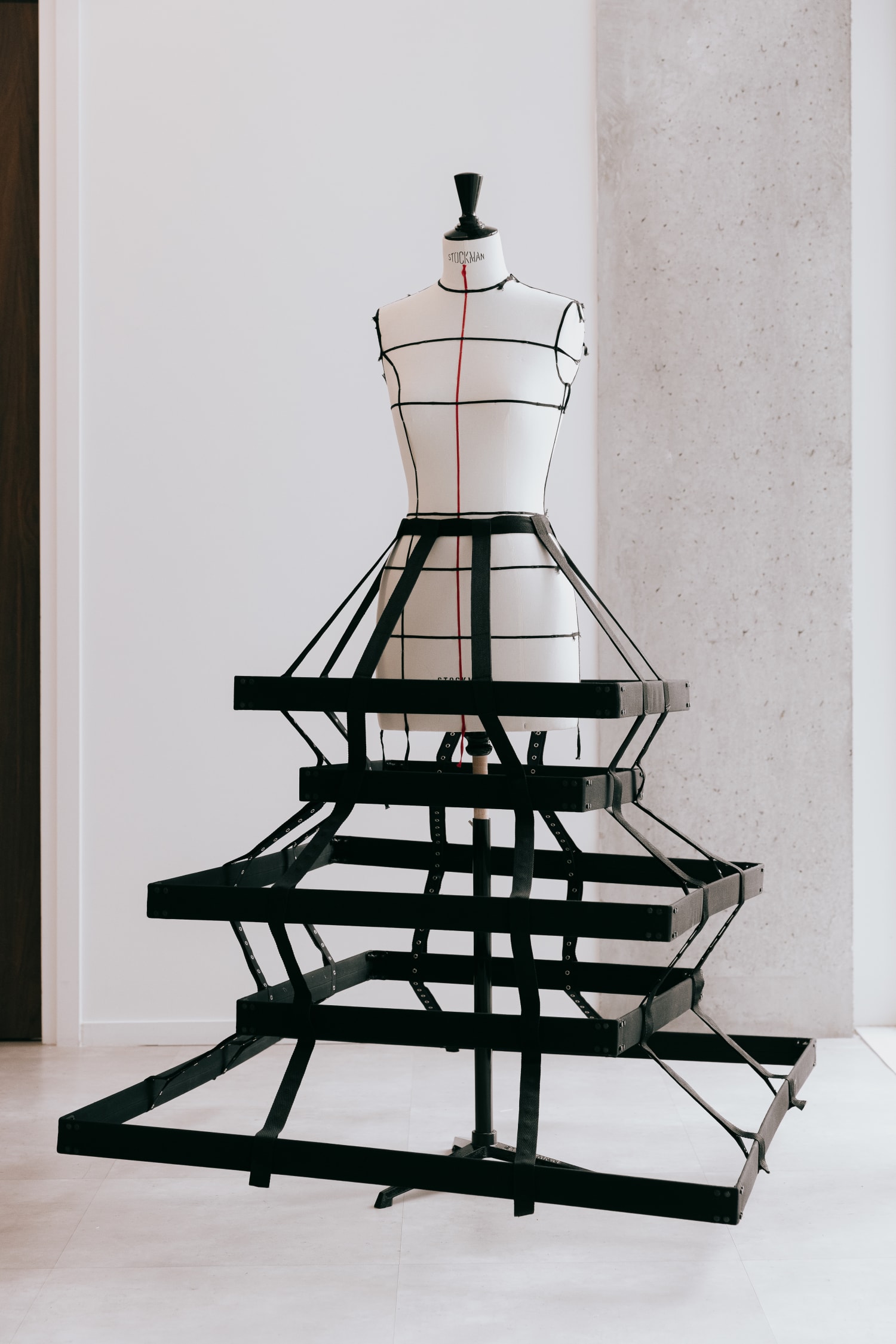
For his collection, Bo Kwon Min offers a personal and poetic vision of megacities and the relationships between the people who inhabit them.
As part of le19M Métiers d’art prize, the Seoul-based South Korean designer collaborated with Paloma, a flou specialist, to create a crinoline that evokes the architecture and contours of buildings that are both places to live and work. The piece can be transformed using press studs, illustrating the idea of ‘transformability’ that is central to his collection. Indeed, the different silhouettes imagined by Bo Kwon Min have been designed to evolve over time, like a reaction to fatigue and the constant desire for newness, all while considering the imperative of sustainability. Paloma’s expertise brought this crinoline – a shape dear to the designer’s heart – to life, responding to his imagination. Thin strips of aluminium, five centimetres high and laid horizontally, form a fixed frame, covered with a black woollen fabric, each corner of which is fixed with joints and screws. This frame is then held in place by supple vertical straps made from strips of black grosgrain.
For the L’Atelier des Matières prize, Bo Kwon Min was guided by his instinctive choice of materials. The designer selected a particularly rigid fabric with sharp, clean edges that posed a very real challenge of reconciling the structural elements with an aesthetic appeal.
Paloma
Founded in 1982 by Mr and Mrs Lopez and integrated into the Fashion Métiers d’art in 2011, the Paloma atelier excels in the techniques of flou and grand flou, these delicate, soft and unstructured materials whose perfect drops are the fruit of complex and unique savoir-faire. Renowned for its multi-faceted approach, from the creation of a finish to a complete garment, Atelier Paloma has worked with the major ready-to-wear and haute couture houses since it opened.
In their various ateliers, silk, organza, gauze and fine crêpe are rendered sublime by the artisans. They work closely together to imagine a fully bespoke solution to a creative request, or to make a garment in its entirety – forming an unprecedented and highly versatile complete circuit for a Métier d’art.
Fengyuan Dai
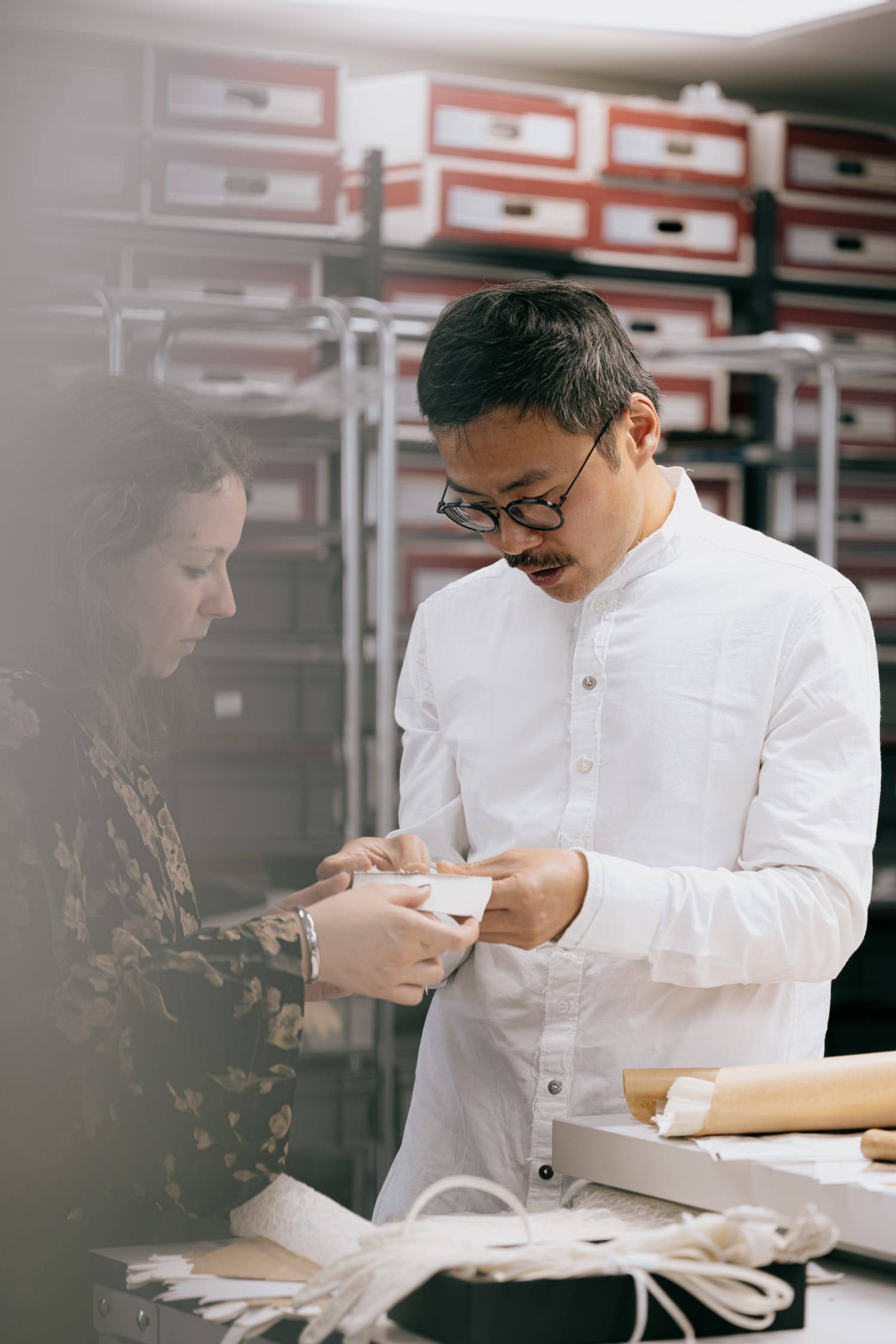
Fengyuan Dai was born, raised and educated in China. The designer chose to continue his training in France, where he now lives. His collection, entitled « Equilibre », is inspired by his own personal journey “in a country where social relationships are highly hierarchical and codified, and where beliefs are very much a part of everyday life”. “Very early on I realised that this world, which does have a very reassuring side, could quickly become an obstacle to expressing who I was. The cocoon became a straitjacket,” he explains. His collection, designed from recycled materials, expresses the culture shock the designer experienced between his country of origin and France.
For le19M des Métiers d’art prize, Fengyuan Dai collaborated with glovemaker Causse. Both synonymous with elegance and protection, the glove embodies the contrasts dear to the designer, who embellishes them with straps or swathes them in organza, braids and overlocked finishes, contrasting with the texture of the leather. With the complicity of Causse, Fengyuan Dai brings new materials to life, playing with stripes and checks, contrasting the rigour of lines with the softness and poetry of pastel toned gradations.
For the L’Atelier des Matières prize, Fengyuan Dai also called on the glovemaker Causse. Inspired by the contrast between the transparency of organza and the opacity of leather, the designer has created lace-effect gloves to complement his collection.
Causse
Millau, the global birthplace of the glove, is also where Causse was established in 1892, founded by Paul, Jules and Henri Causse, three brothers who were cutters and glovemakers. After more than four generations, in 2012 it joined the Fashion Métiers d’art and UNESCO’s prestigious list of Rare Crafts. Causse perpetuates its heritage and manufacturing secrets, modernising its techniques all while preserving the ancestral tools it has inherited and developing the versatility of its glovemakers, training new artisans and reintroducing rare or lost processes such as the “piqué anglais”.
While Causse works with the big names in fashion, the company also offers its own collections, adhering to the same exacting standards and expertise. Some are timeless pieces in keeping with tradition, while others are more innovative, reflecting a desire for audacity, according to the changing role of the glove in recent years, from utilitarian to fashion accessory.
Igor Dieryck
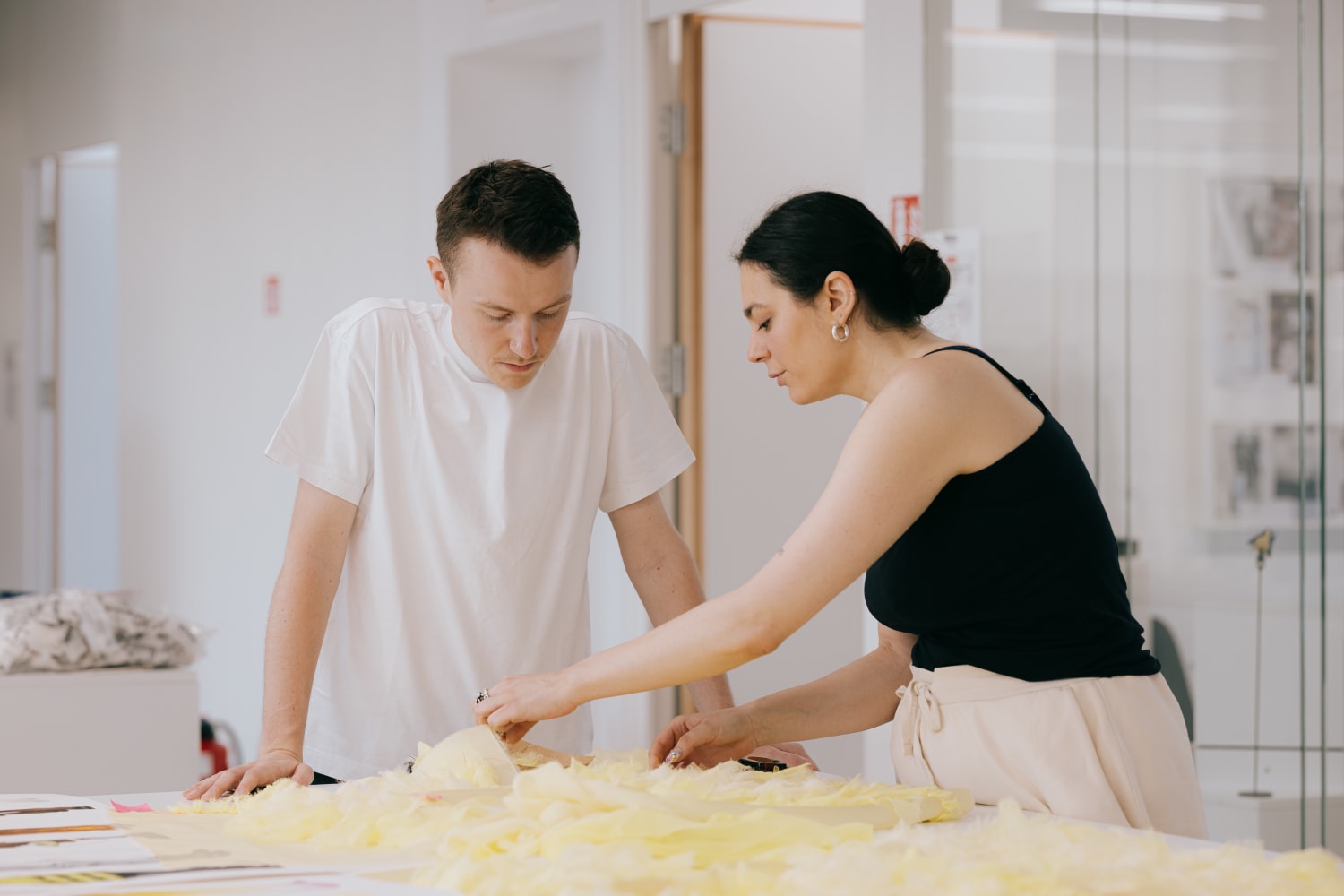
Igor Dieryck is a Belgian designer who graduated from the Royal Academy of Fine Arts in Antwerp. His collection, entitled “YESSIR”, is the result of reflection on the status of hotel staff within their establishment. Having worked on the front desk of a hotel for several years himself, the designer now wants to turn the spotlight on “those who, all too often, are ignored and overshadowed by a system that doesn’t give them room to be powerful.” His silhouettes explore the diversity of relationships between hotel employees, the rules and codes that govern them, and the role and symbolism of the uniform, which he reappropriates and deconstructs. They are made from sustainable materials – including linen and organic cotton – and fabrics produced locally in Belgium.
For le19M Métiers d’art prize, Igor Dieryck collaborated with feather and flower maker Lemarié. In keeping with the witty, surreal aesthetic of his collection, the designer imagined a down jacket with short sleeves and a hood inspired by a feather duster, a nod to the hotel industry as well as to the House’s historic savoir-faire with feathers. Lemarié’s artisans have created hand-dyed chiffon ‘feathers’ in two shades of yellow to create a trompe-l’œil effect. From the vast array of techniques offered by the House, the designer chose to fray this delicate, transparent fabric to give it a « destroyed », embossed finish.
The designer compares this time-consuming art of illusion and attention to detail to the difference between the experience of a hotel guest and the behind-the-scenes world to which only the staff have access. This flamboyant creation also embodies a tension between extremely meticulous craftsmanship and the banality of an everyday object.
For the L’Atelier des Matières prize, Igor Dieryck wanted to push the boundaries of uniform codes. His suit is the result of a long process of fabric transformation, designed to make the original material unrecognisable and to give the impression of having been worked from brand new materials.
Lemarié
Founded in 1880, Lemarié was one of 300 feather workers in Paris at the time. Initially, the company’s business was devoted to feathers used to decorate hats for clients and boas for cabarets. Dyed in every colour, the most precious feathers were meticulously refined, cut and curled. André Lemarié, the founder’s grandson, joined the family business in 1946 and set about developing it. He presented samples of feathers to the great names in fashion and extended the company’s activities to include flowers. In the 1960s, when Gabrielle Chanel made the camellia an emblematic element of CHANEL, it was only natural that she should turn to Lemarié.
Lemarié also excels in couture sewing (inlays, flounces, sophisticated smocking, etc.) and pleating. This latter expertise was further strengthened by the acquisition of the House of Lognon in 2014. Renowned for its four exceptional savoir-faire as well as its dynamism, Lemarié continues to grow while keeping its techniques intact and handing down its perfectly mastered expertise.
Jung Eun Lee
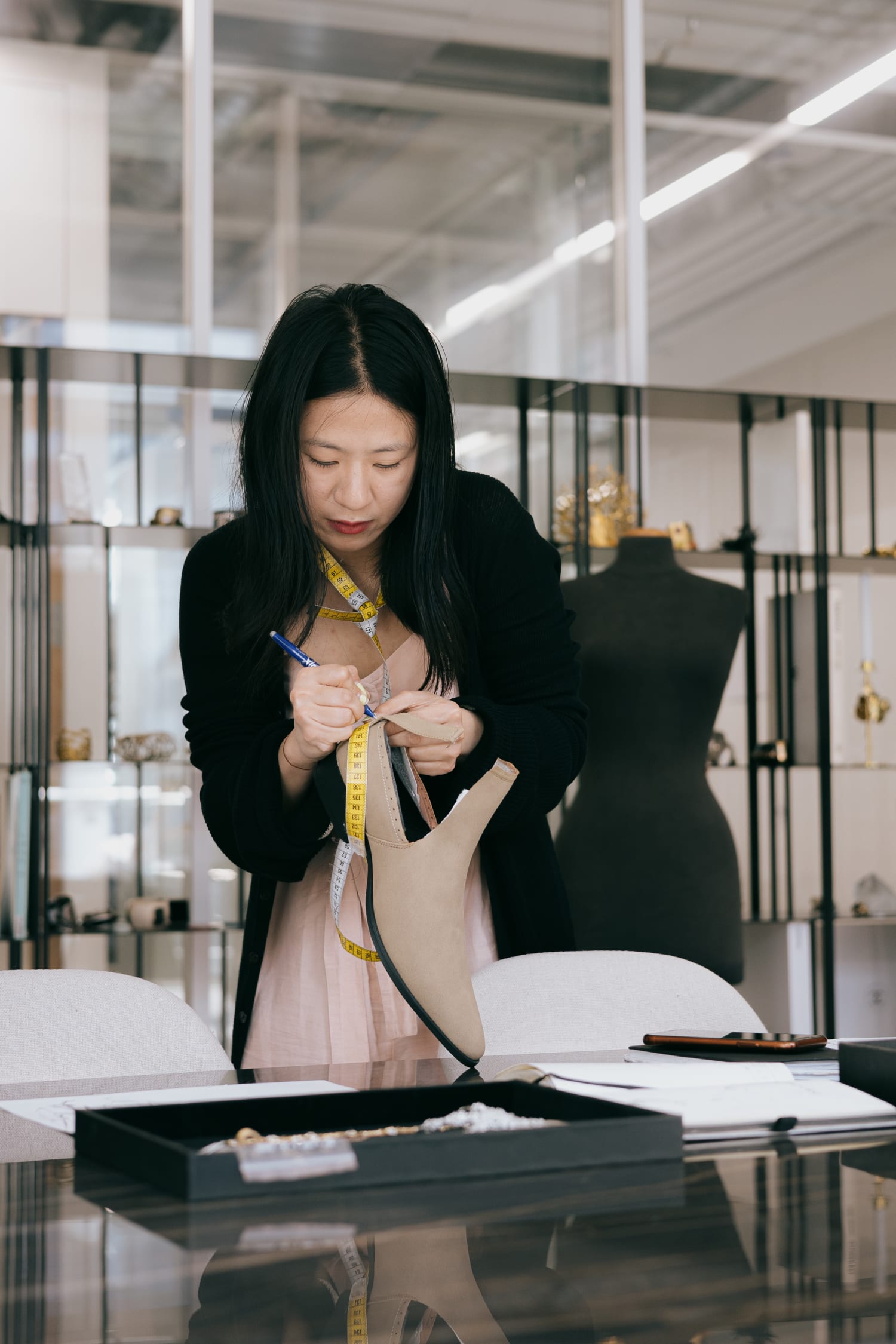
A student at the Kunsthochschule Berlin-Weissensee, South Korean designer LJ (or Jung Eun Lee) presents a collection entitled ‘YOU WEAR THE MOST BEAUTIFUL ANIMAL IN THE WORLD’, which questions the use of animal materials in the fashion industry and their significance, as well as the notions of luxury and opulence associated with them. She extends her research to the role of clothing in defining and representing identity – particularly gender identity – and also to the concept of ‘territorialisation’ through a reinterpretation of the justacorps, a 17th century knee-length coat worn by men. The designer gives a second life to old materials and traditional techniques.
For le19M Métiers d’art prize, Jung Eun Lee has created five pieces of jewellery and fastening systems in pewter and gilded brass, in collaboration with the goldsmith Goossens. Moving away from the symbols and materials traditionally associated with luxury and opulence – gold, precious stones, etc. – the designer explores animal parts generally perceived as disturbing or repulsive, such as chicken feet which become earrings and a necklace. Emphasising the ephemeral nature of life, and particularly of the animal kingdom, cuff bracelets are adorned with butterflies to express the individual’s connection to nature. The designer imagines interactions between the body and what adorns or dresses it. The different finishes offered by Goossens reinforce the illusion and impression of movement, with the jewellery becoming an integral part of the silhouettes.
Jung Eun Lee uses fabric offcuts to imitate feathers and fur throughout her collection, and her entry for the L’Atelier des Matières prize is a jacket with detachable and foldable sleeves, adorned on the front with a feather-like bird motif handmade from fabric scraps recovered during the pattern-making process, and fur-effect trousers also trimmed with fringes of fabric selected from the Atelier’s materials.
Goossens
Founded in 1950 by Robert Goossens, the House of goldsmiths transforms bronze, rock crystal, wood and glass paste into extraordinary jewellery, ornaments and decorative objects. Goossens joined the Fashion Métiers d’art in 2005.
Leevi Ikäheimo
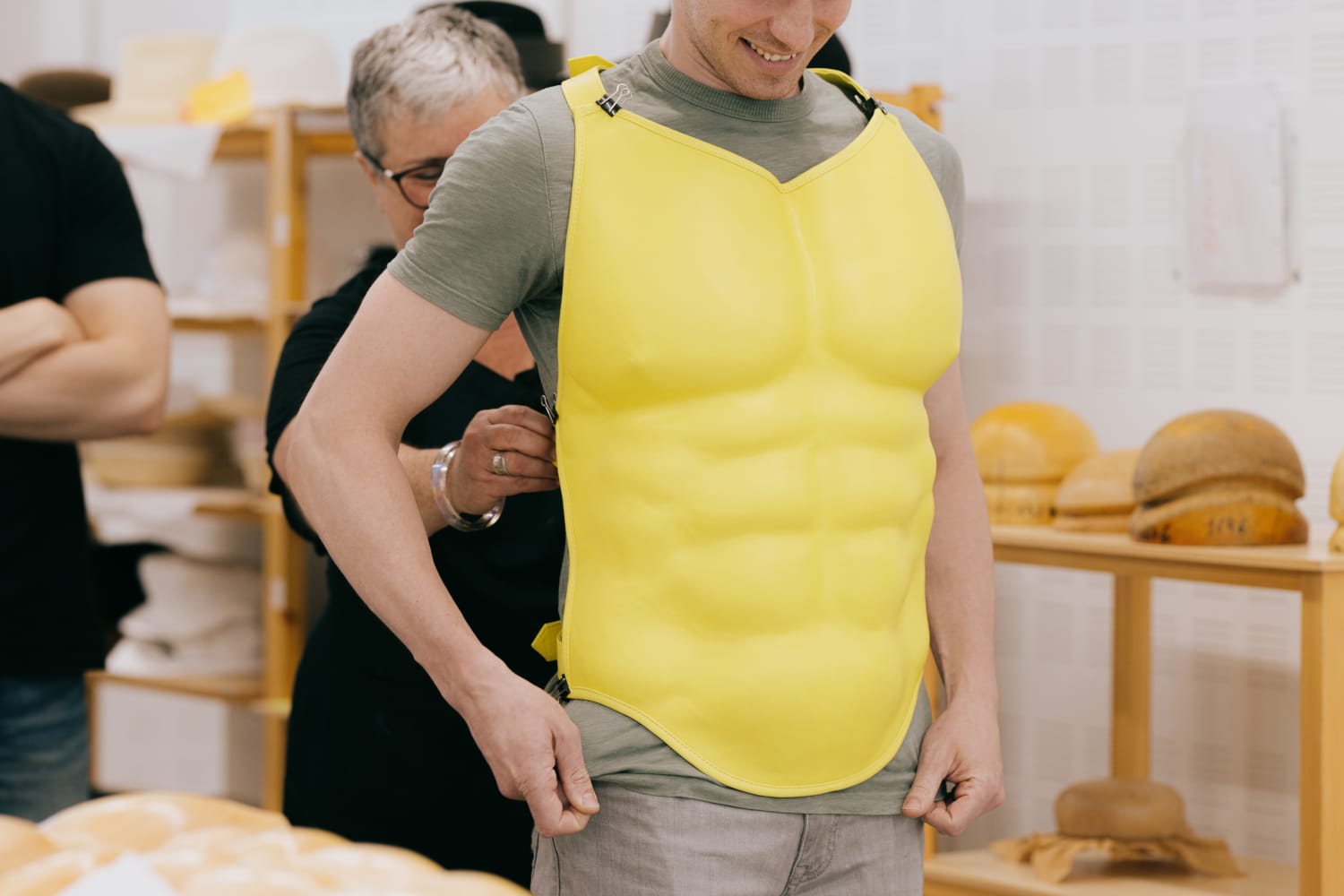
Leevi Ikäheimo is a Finnish designer with a degree from Aalto University. His collection, “NO PAIN NO GLAMOUR” is a critique of the way the body is represented. He was particularly inspired by the plastic toys with unrealistic muscles, designed for little boys. Each one of his silhouettes is imagined as a character or avatar of disproportionate proportions and bright colours, meant to evoke the child in all of us – or, in the designer’s words, “a bodybuilding rave troll doll on steroids”. This ready-to-rave party wardrobe is based on research into the anatomical cuts of muscles in the human body, as well as early-2000s rave wear as seen in Helsinki. Very attached to handcraftsmanship, he combines different techniques, from industrial knitting to hand weaving and artisanal leather work.
For le19M Métiers d’art prize, Leevi Ikäheimo has redeployed Maison Michel’s historic hat-making expertise by designing a plastron in moulded yellow lambskin inspired by children’s toys. This sculpted torso in leather and felt, attached at the back by two straps, was a long-standing idea of the designer’s that Maison Michel’s expertise finally allowed him to realise. A limewood block was specially developed by the ateliers.
His silhouette, competing for the L’Atelier des Matières prize, falls in line perfectly with the idea of a party wardrobe. This after-party look, consisting of a black jumpsuit, “muscle” gloves and mask, turns the spotlight on his leather work.
Maison Michel
A creative laboratory in constant evolution, Maison Michel was founded in 1936 by Auguste Michel, and in 1968, with the arrival of two talented milliners, Pierre and Claudine Debard, it became hatter to the most prestigious fashion houses. Maison Michel has preserved a treasure trove of over three thousand wooden blocks and an extraordinary stock of antique straws and felts. Under the impetus of Artistic Director Priscilla Royer, the hatter and milliner artisans bring the most inventive creations to life, constantly renewing the designs.
Marc Sanz Pey
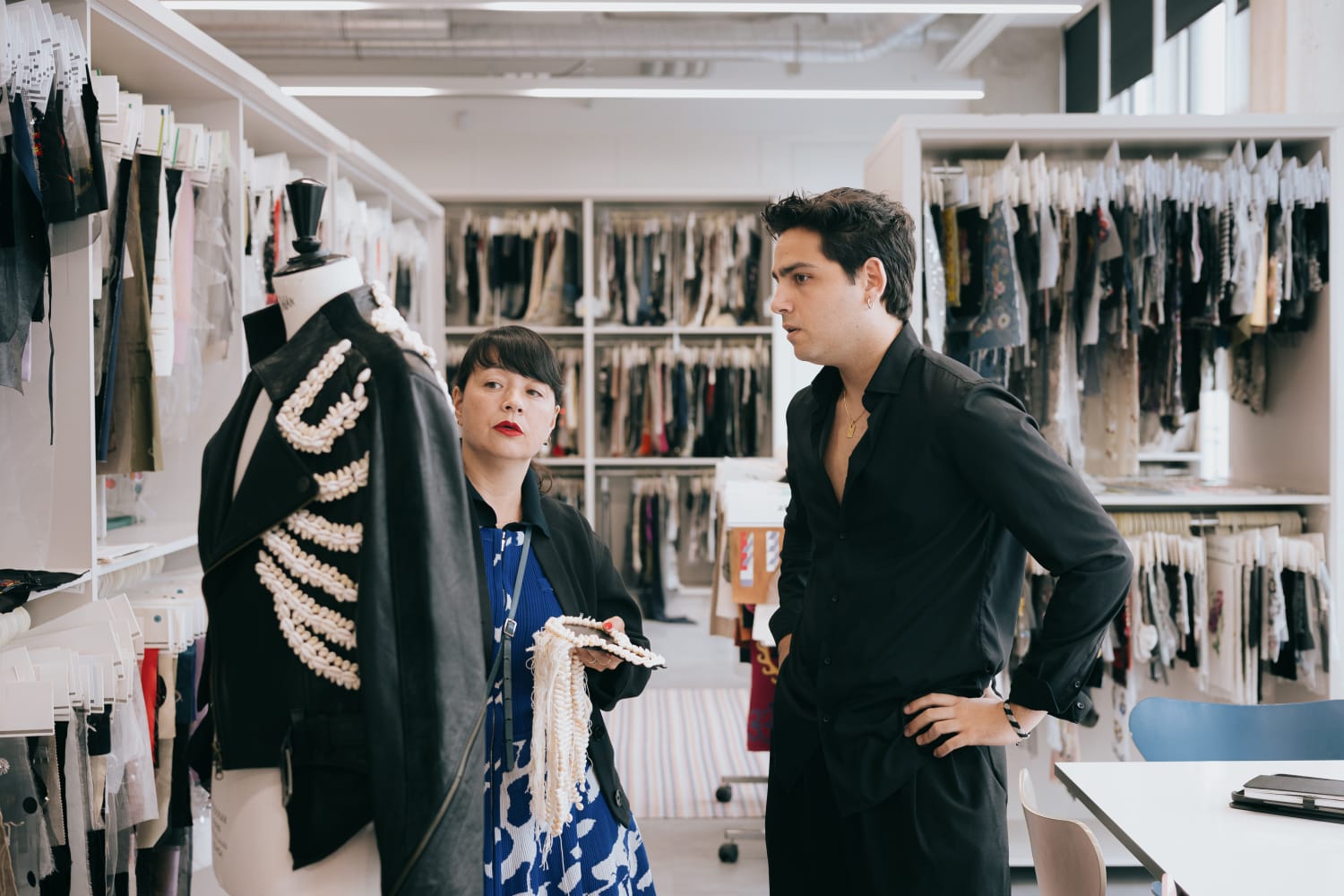
A graduate of the Istituto Europeo di Design in Barcelona, Spanish designer Marc Sanz Pey’s “Sol Fleet” collection explores the cultural impact of the arrival of pirates on the island of Ibiza. His silhouettes blend the adventurous spirit of pirates with the hippie movement’s desire for freedom, inextricably linked to the Balearic island’s history. This fusion of two seemingly different worlds, united by a rejection of norms, leads to relaxed, fluid and adaptable men’s silhouettes that embody a “nomadic spirit”, in the words of the designer. They echo both the clothing accumulated by pirates on their expeditions and the spiritual adventures of hippies in India and beyond. Marc Sanz Pey has a strong attachment to traditional craftsmanship, and has created adjustable garments that adapt to every body shape and are designed to evolve over time, taking into account the imperative of sustainability.
As part of le19M Métiers d’art prize, the designer worked with the Montex embroidery atelier to decorate a jacket from his collection. A fusion of a leather jacket and a tailcoat, it combines punk counterculture with the elegant tailoring inherited from the history of men’s suits. With a nod to pirate flags, the voluminous embroidery created by Montex represents a skeleton made of cowrie shells, an ocean native that recalls the self-sufficiency of pirates travelling the high seas.
For the L’Atelier des Matières prize, the designer wanted to highlight his choice of fabrics by creating a silhouette guided by the rich texture of the materials. Playing on the contrast between transparency and opacity – like an echo of the culture shock that inspired his collection – a wool etamine jumpsuit whose transparency reveals the body, is belted with a leather corset laser-engraved with floral motifs. These two pieces can be adjusted with a set of buckles to suit all body shapes. A short-sleeved overshirt inspired by a tailcoat revealing the chest is adorned with skeleton-like branches surging with delicate flowers, cut, painted and assembled by hand. A metaphor for his collaboration with the atelier, which brings sleeping fabrics back to life.
Atelier Montex
Founded in 1939 in Paris by Jacques Lemonier, the Montex embroidery atelier began by making fabrics embroidered by the metre for Parisian fashion houses. Today, the company produces a wealth of embroidery samples that are modern, sophisticated and innovative. To make them, Atelier Montex uses Lunéville crochet hooks and needlework as well as its Cornely machines, century-old embroidery machines that are mechanical but hand-guided, allowing for alternative stitching techniques.
Montex joined the Fashion Métiers d’art in 2011. Through its research into new materials and innovative techniques, Montex strives to push the limits of the imagination with every new creation, transcending the immutable links between luxury and craftsmanship, sublimating the virtuosity of the work through beauty and emotion.
Norman Mabire-Larguier
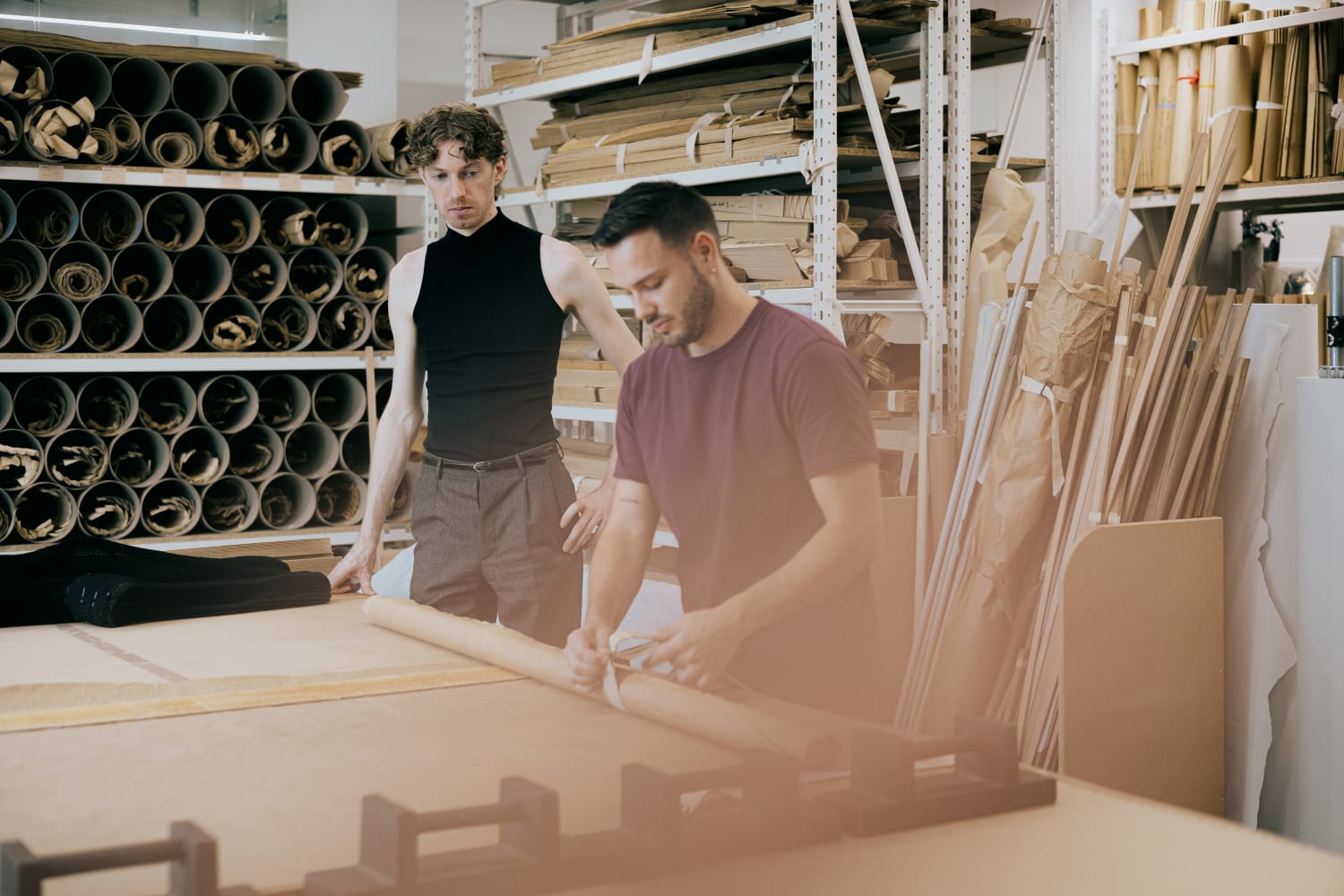
A graduate of La Cambre and HEAD, Norman Mabire-Larguier wants to “express unspeakable feelings and give shape to [his] inner world through clothing” so that viewers can focus on their own emotions. The designer looks for natural, high-quality materials to make his collections, the fruit of exceptional craftsmanship. Recycled and upcycled fabrics are an integral part of his approach.
For le19M des Métiers d’art prize, the French designer has created a long tubular garment in black silk organza, entirely pleated. Like a chrysalis, it moulds and partially hinders the body all while subtly revealing it through its transparency. Under the impetus of the designer, the pleats by the House of Lognon became a material in their own right, going beyond embellishment. After an initial collaboration, Norman Mabire-Larguier and Lognon developed the designer’s own pleating technique, which is now part of his creative vocabulary. The extremely fine fabric is meticulously pleated over a great height by six or eight hands, working in perfect synchronicity.
His creation for the L’Atelier des Matières prize is conceived as a highly architectural ‘abstraction’ of a jacket, which partially constrains the body. The piece is made entirely of black, transparent synthetic horsehair, a rigid material more usually employed as reinforcement inside tailored garments.
The Lognon Ateliers
The Lognon story began in 1853 with Émilie Lognon, a luxury linen keeper under Napoleon III, who came up with the idea of crimping fabrics with her irons. It continued with her heirs, right up to her great-grandson Gérard Lognon, who took over the family business in 1945, by then renowned for the art of pleating using cardboard moulds. This rare expertise is now under the aegis of the Fashion Métiers d’art, which is working to ensure it continues to thrive, all while anchoring it in the third millennium. Today, the company has an incredible legacy of over 3,000 meticulously archived designs.
Petra Fagerstrom
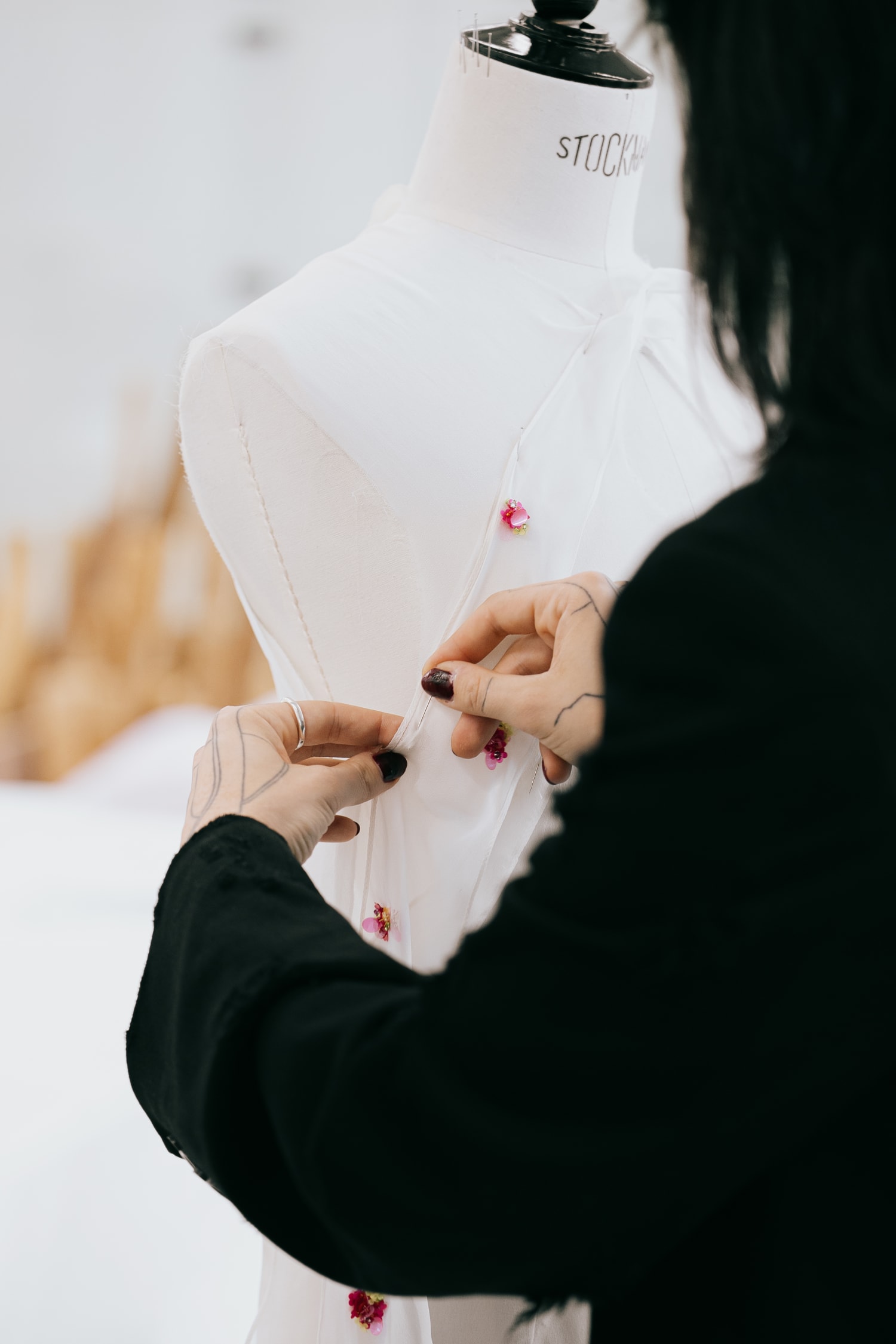
Swedish-born designer Petra Fagerstrom was inspired by her grandmother, a parachutist at the time of the USSR. Guided by her willpower, courage, dreams, and more literally by her photos and wardrobe, Petra Fagerstrom pays tribute to this tutelary figure and her personal style, combining army surplus clothing and parachutes rendered sublime by a pleating technique as well as pyjamas and nightdresses with floral motifs. Her collection recalls the oppression of the regime and her grandmother’s dream of travelling to the American continent, to California or Florida. An impossible, unmentionable dream, which the designer materialises through her “magical” nightdresses and pyjamas that seem to “expose” the wearer’s dreams, with motifs inspired by postcards from the era.
For le19M Métiers d’art prize, Petra Fagerstrom created a floral dress in collaboration with the embroiderer Lesage. This piece reinterprets the signature lenticular pleated fabric of her collection, a technique that reveals two different images depending on the point of view. This process is revisited in the form of an embroidery whose colour changes with the movements of the fabric.
Petra Fagerstrom’s silhouette for the L’Atelier des Matières prize combines a pleated leather skirt with a fitted jacket inspired by aviator jackets. On the back, the leather has been aged to reveal the internal construction of the jacket, like the imprint of a parachute harness. The bows are a key motif in the collection, combined with metal details reminiscent of parachute straps.
Lesage
Lesage makes highly elaborate embroideries and tweed weaves for Haute Couture, Ready-to-Wear and fashion accessories, requiring hundreds of hours of work and an extraordinary savoir-faire.
As early as 1858, embroiderer Michonet supplied the first big names in the history of Haute Couture, including Charles Frederick Worth, Paquin and Madeleine Vionnet, whose assistant in charge of embroidery was none other than Marie-Louise Lesage. In 1924, Albert and Marie-Louise Lesage took over the Michonet atelier, which became Lesage et Cie. As an inventor of new techniques, Lesage quickly gained a reputation among the great couturiers for its avant-garde embroidery.
The year 1983 marked the arrival of Karl Lagerfeld at CHANEL and the beginning of the collaboration with Lesage. Driven by the desire to diversify the activities of his House, François Lesage created a textile atelier in 1996. Two years later, he offered CHANEL tweeds for its Ready-to-Wear collections, and since 2008, Lesage has also been designing tweeds for Haute Couture. These sophisticated blends of yarns from a wide range of materials reflect a unique savoir-faire.
An unwavering partner to the House for its annual ten collections, Lesage joined the Fashion Métiers d’art in 2002.
Tiago Bessa
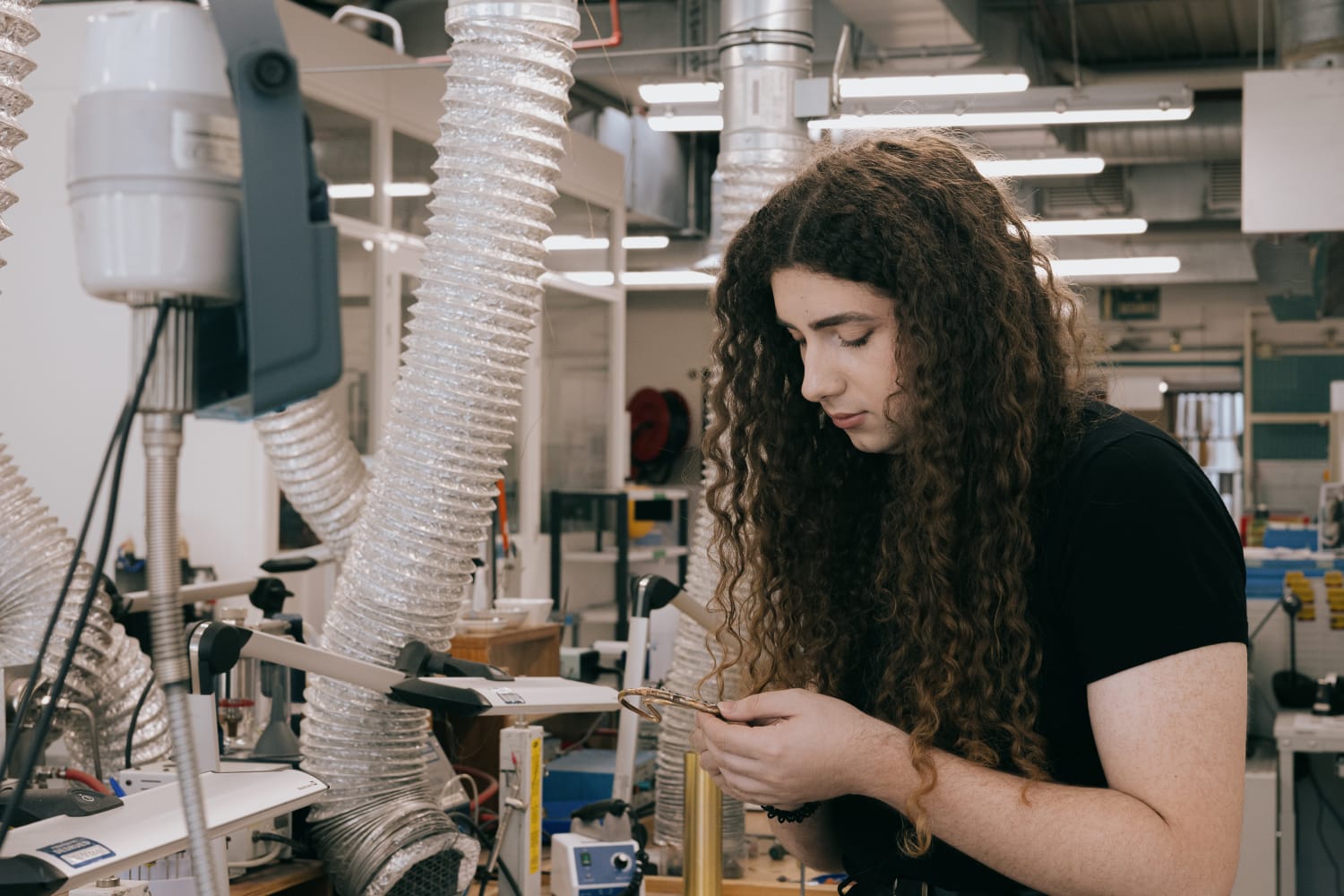
Tiago Bessa, a Portuguese designer, drew inspiration for his “Hermaphrodite” collection from personal experience, the construction of gender and his difficulty, as a non-binary person, to fit into so-called ‘norms’. His silhouettes evoke the trauma of a queer teenager growing up in a village in Portugal. Tiago Bessa’s research into intersex people – also known as ‘orchids’ – who undergo non-consensual surgical procedures aimed at assigning them a defined sex, has led him to explore and disrupt archetypes. His architectural and organic forms are inspired by orchids and the human anatomy. They seem to have been distorted to evoke ‘corrective’ procedures, like a metaphor for the dangers of binarity. The haute couture and tailoring techniques are a tribute to his mother and grandmother, a model-maker and seamstress respectively, and to the workshop where Tiago Bessa spent much of his childhood developing his identity.
For le19M Métiers d’art prize, Tiago Bessa collaborated with parurier Desrues to create an accessory that combines metal adorned with welded clasps and 3D-printed resin with a metallic finish. The organic shape of the piece follows the contours of the face, inspired by the network of muscles and bones that make it up.
For the L’Atelier des Matières prize, Tiago Bessa designed an evening dress with organic curves symbolising his struggle with gender dysphoria. This piece, made from a particularly delicate and complex material, combines elements from each of the looks in his collection with the clasps used in his collaboration with parurier Desrues for le19M Métiers d’art prize.
Desrues
The House of Desrues, artistic parurier, is all about combining savoir-faire with creativity. Founded by Georges Desrues in 1929, the manufactory produces buttons, jewellery, belt buckles and bag clasps every season for some of the biggest names in fashion. A CHANEL partner since 1965, Desrues was the first House acquired by CHANEL in 1985, in order to preserve and develop its exceptional savoir-faire.
While the Desrues archive is home to more than 20,000 designs, the House constantly seeks to innovate from one collection to the next, and no creation is ever reproduced identically. The development of new materials and shapes, laser engraving, 3D printing, and the reappropriation of existing materials are just some of the ways in which the artisans masterfully combine technological inventiveness with ancestral savoir-faire.

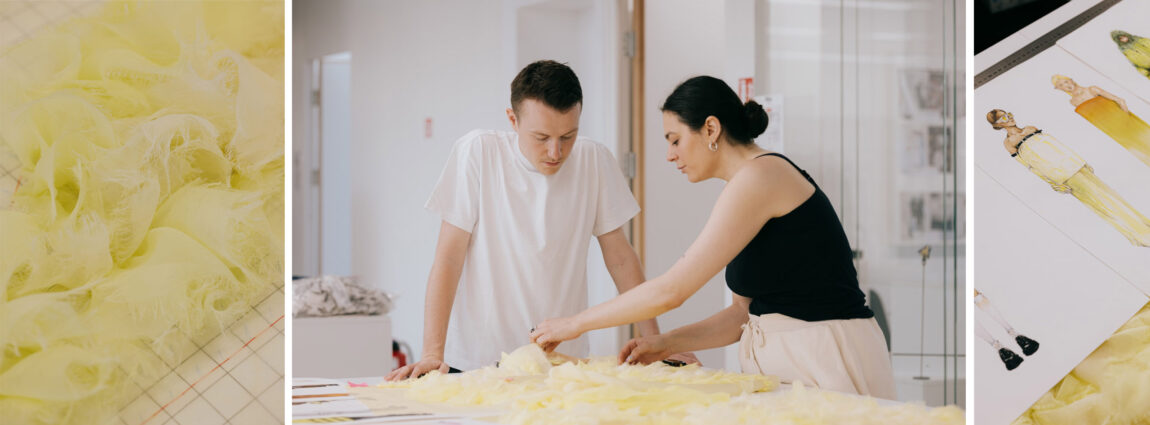
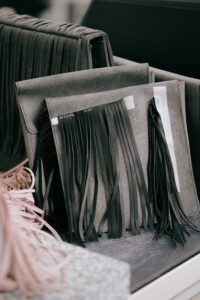
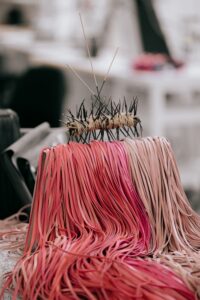
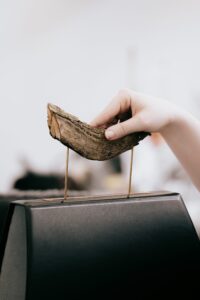
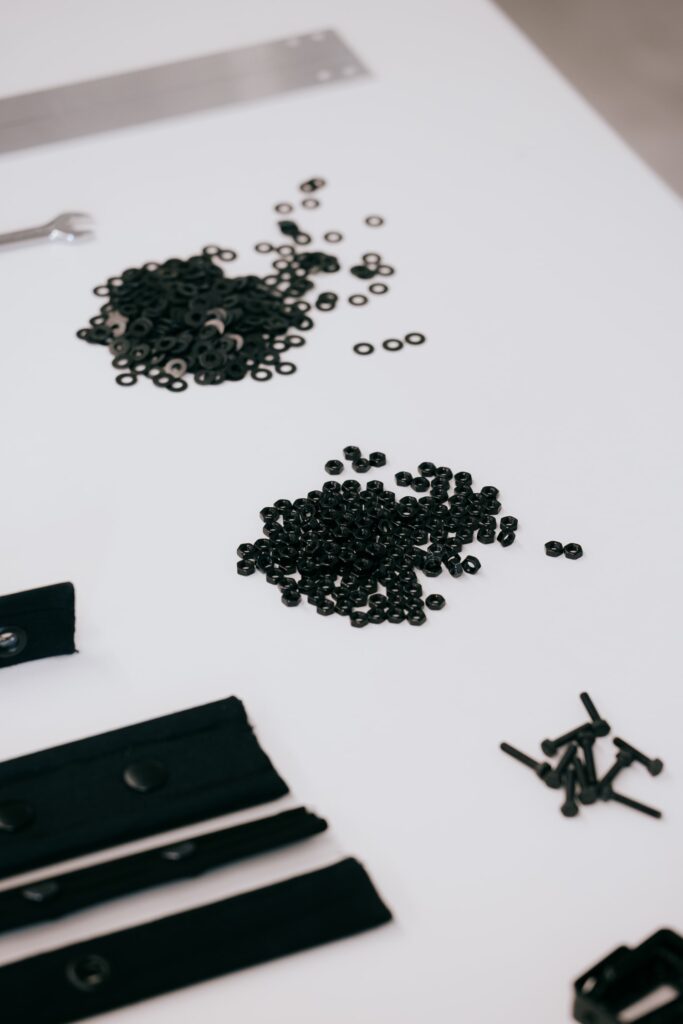
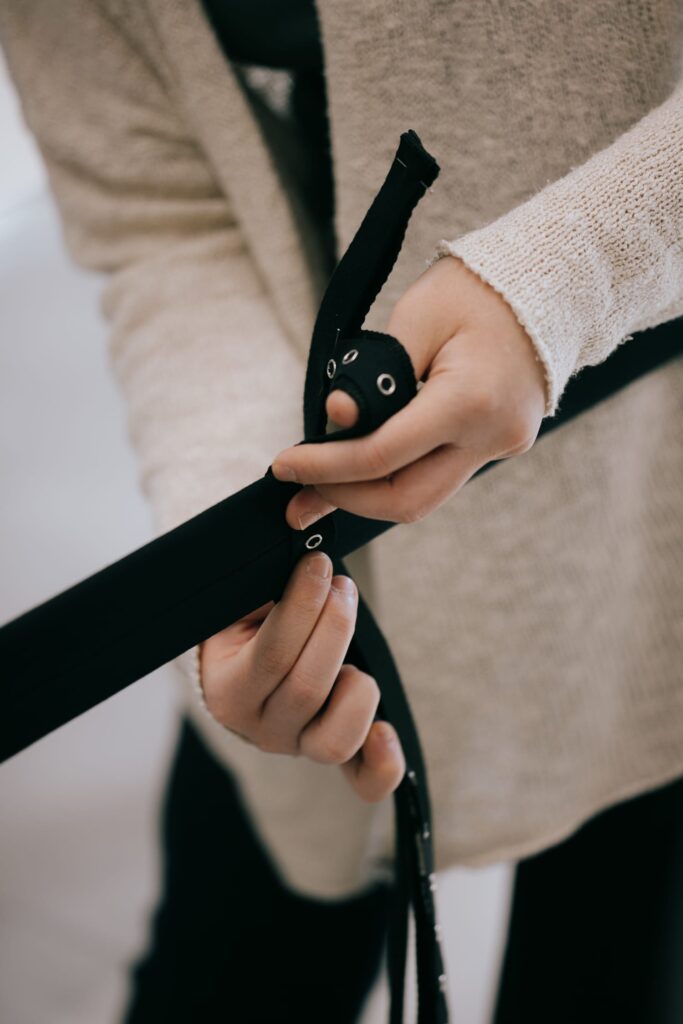
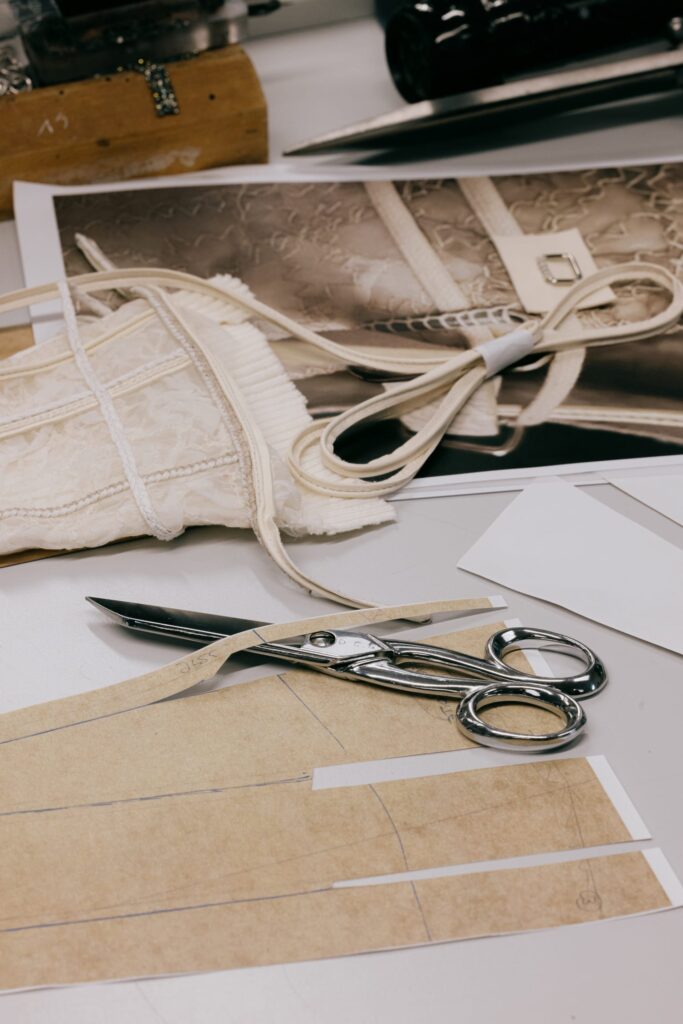
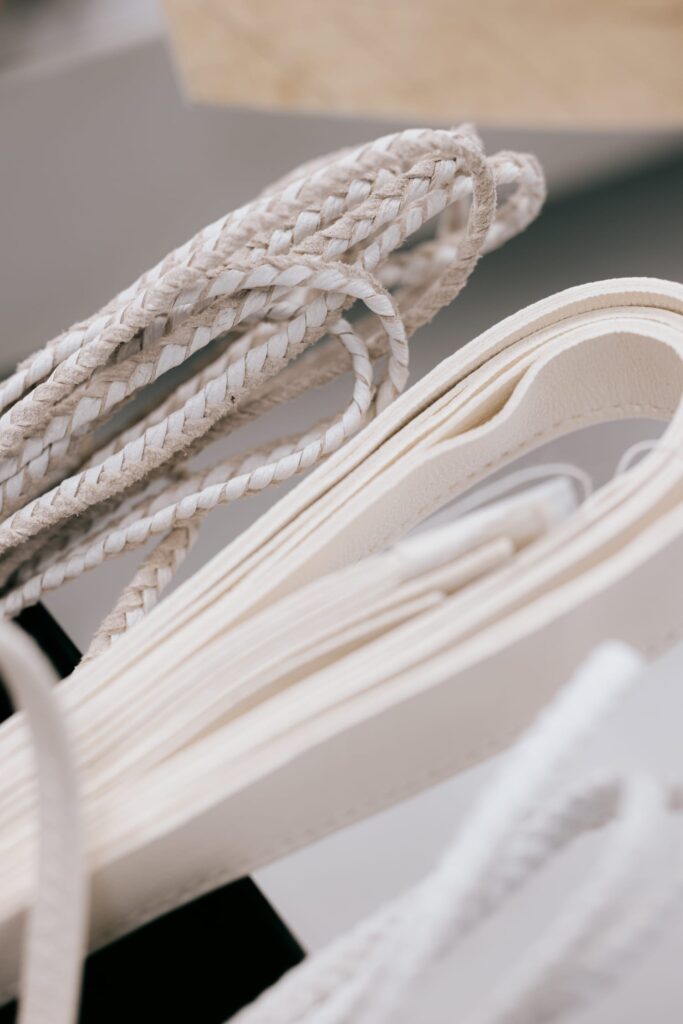
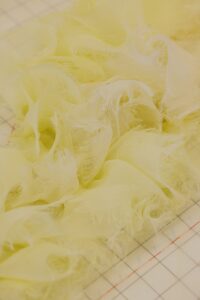
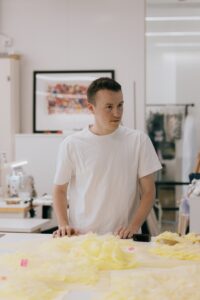
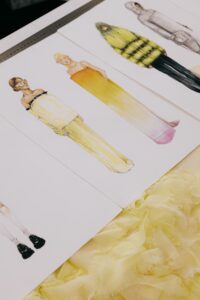
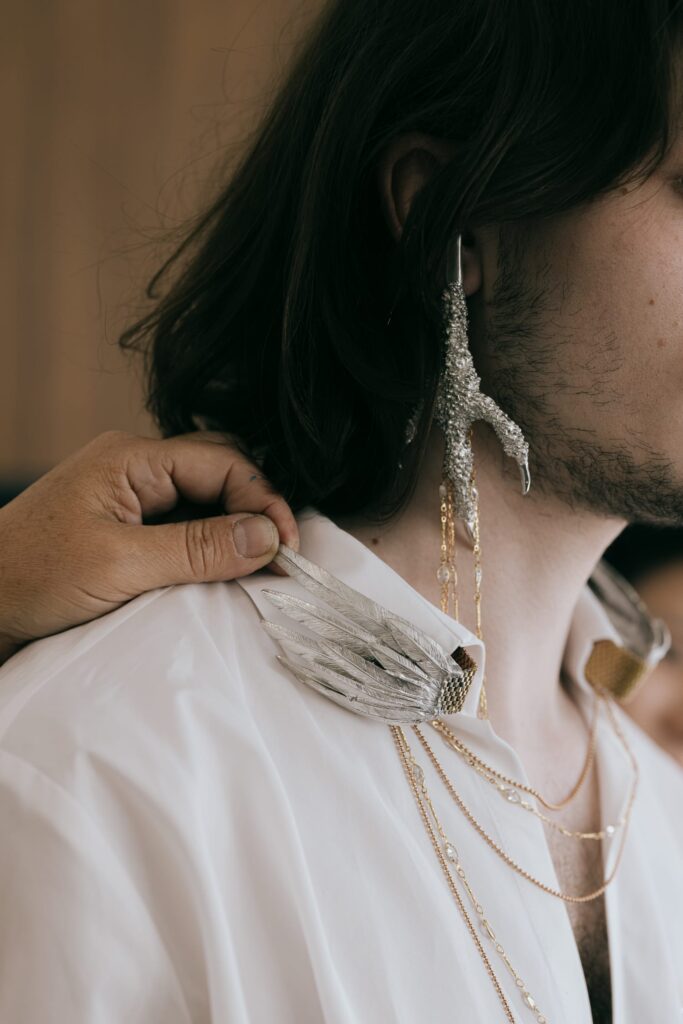
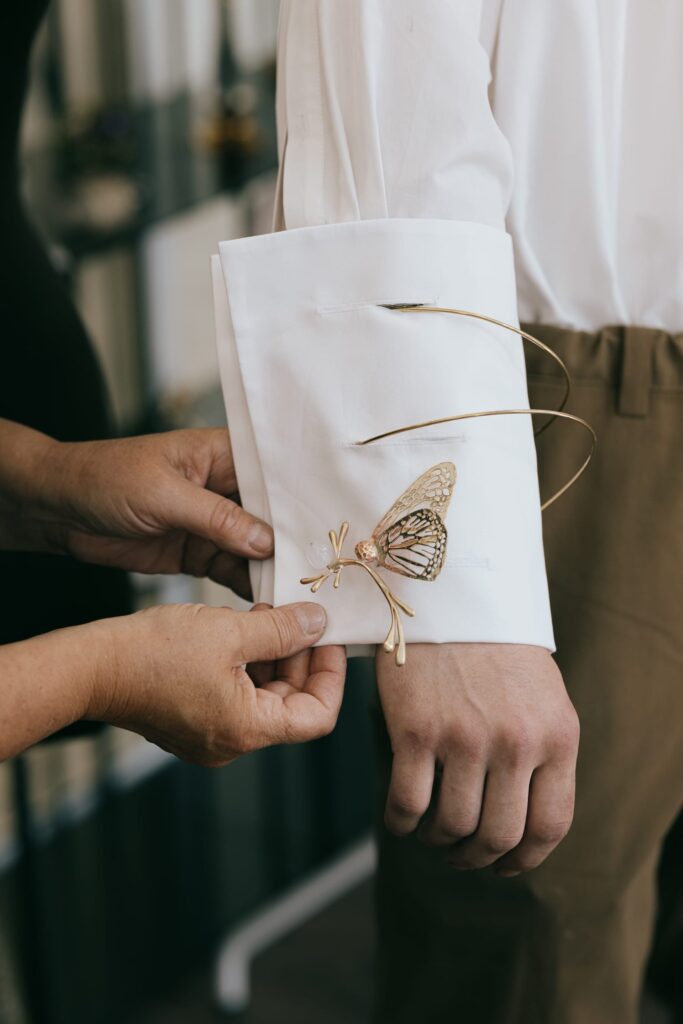
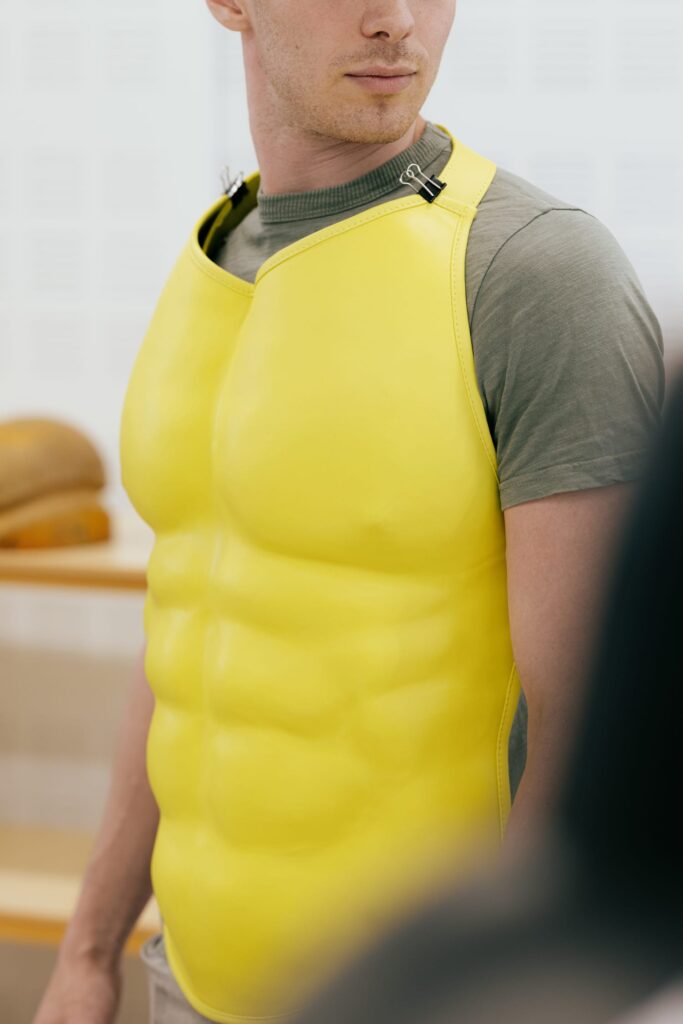
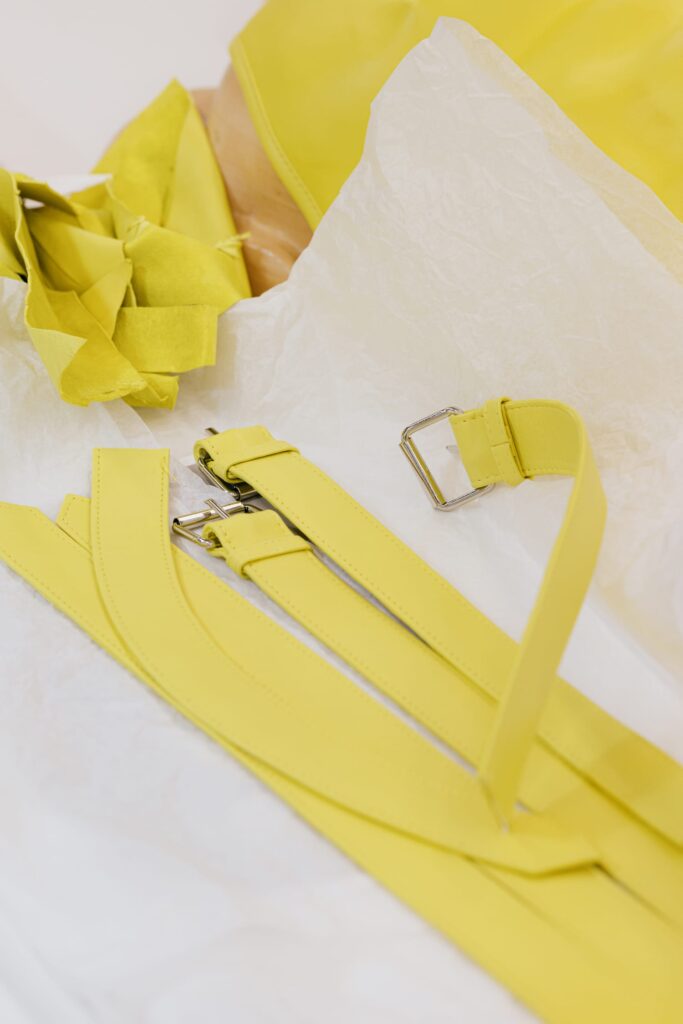
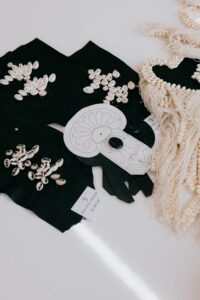
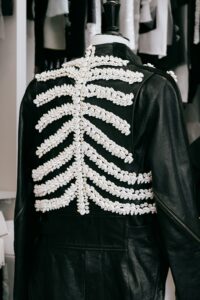
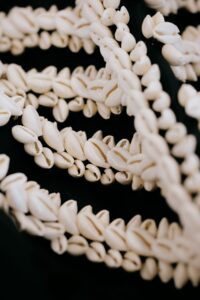
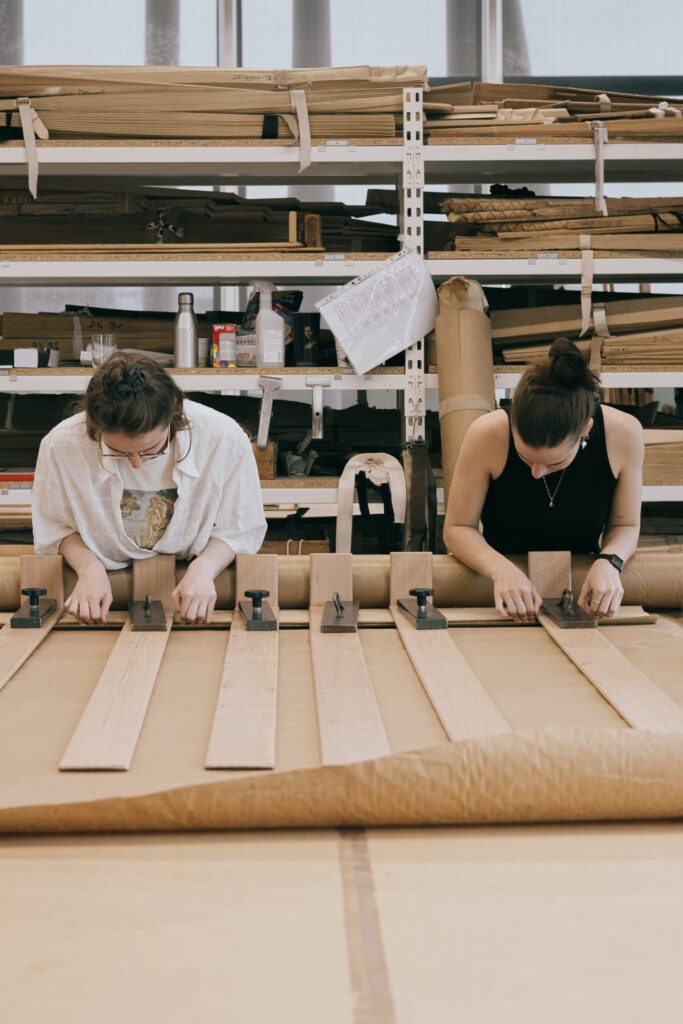
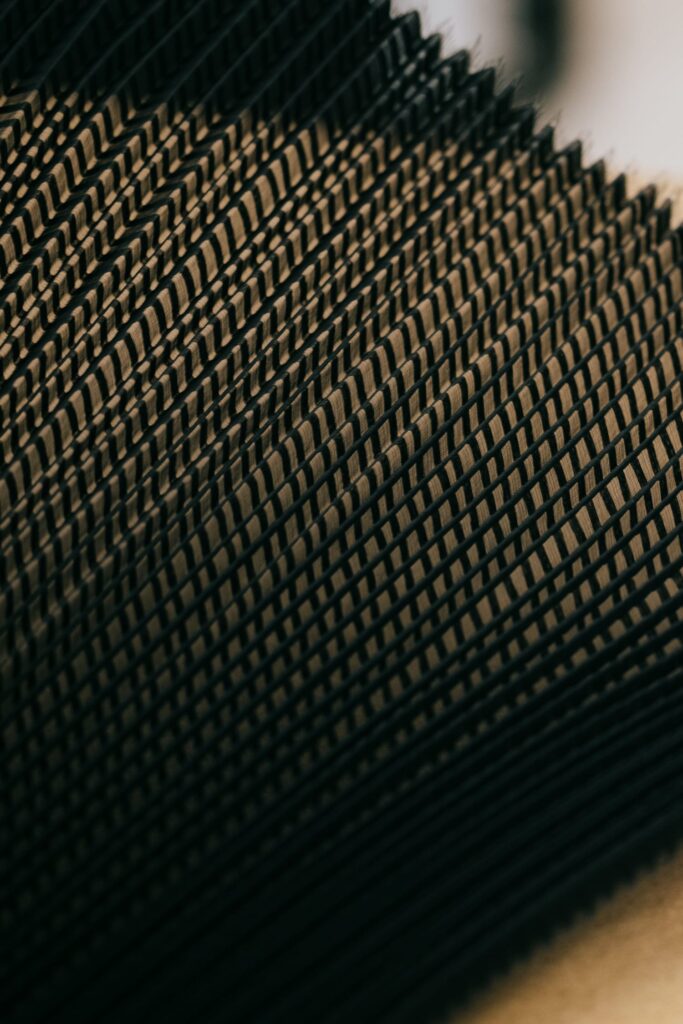
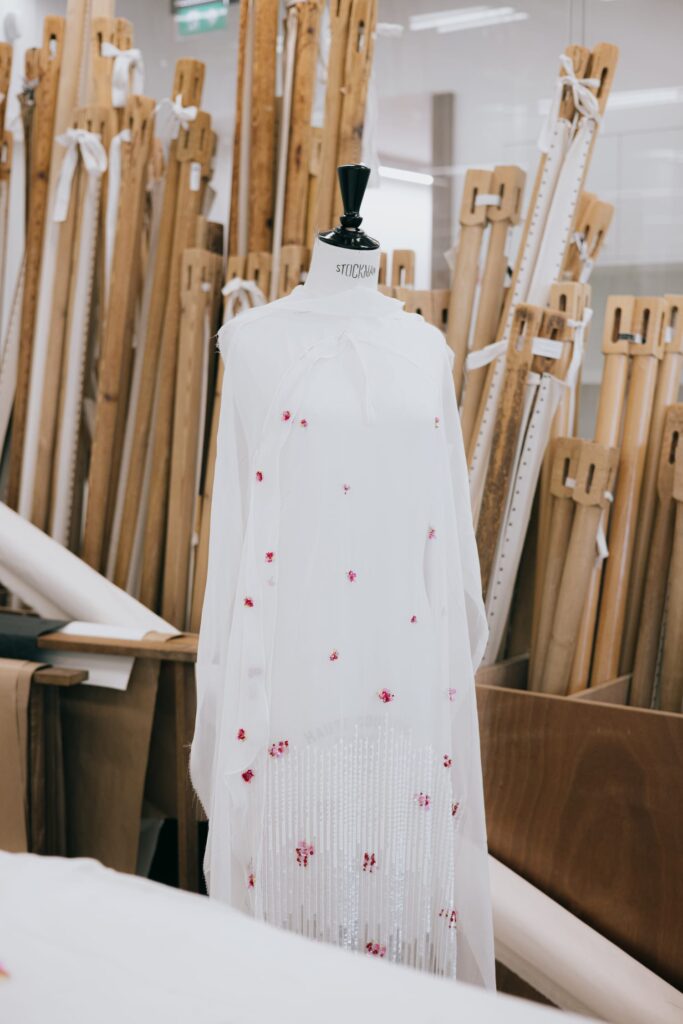
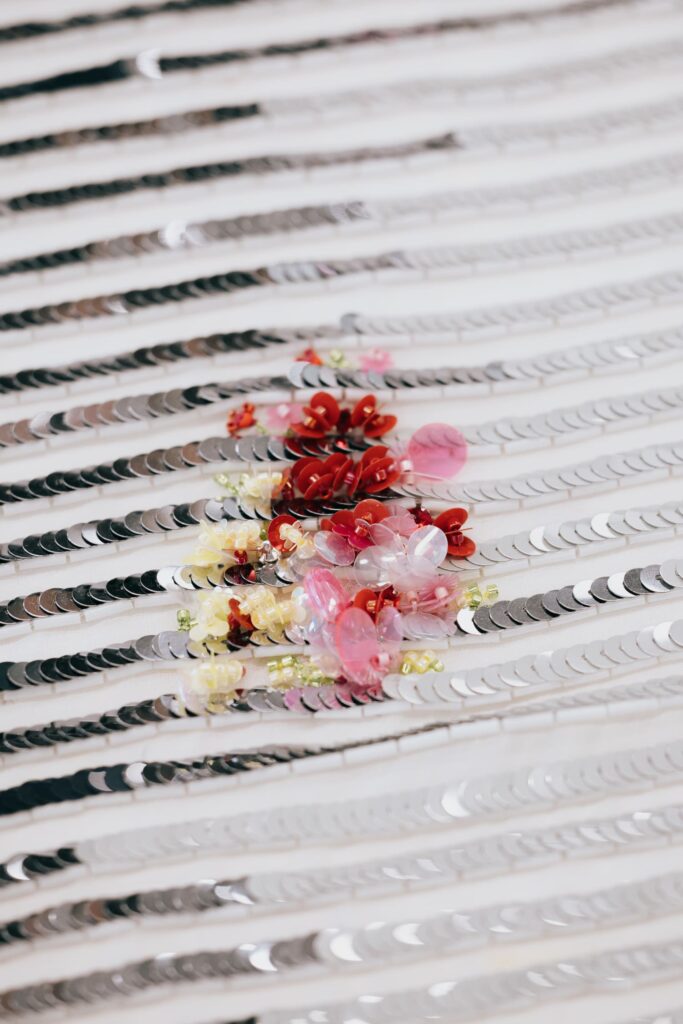
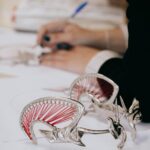
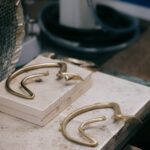
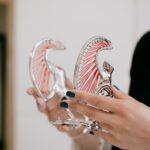
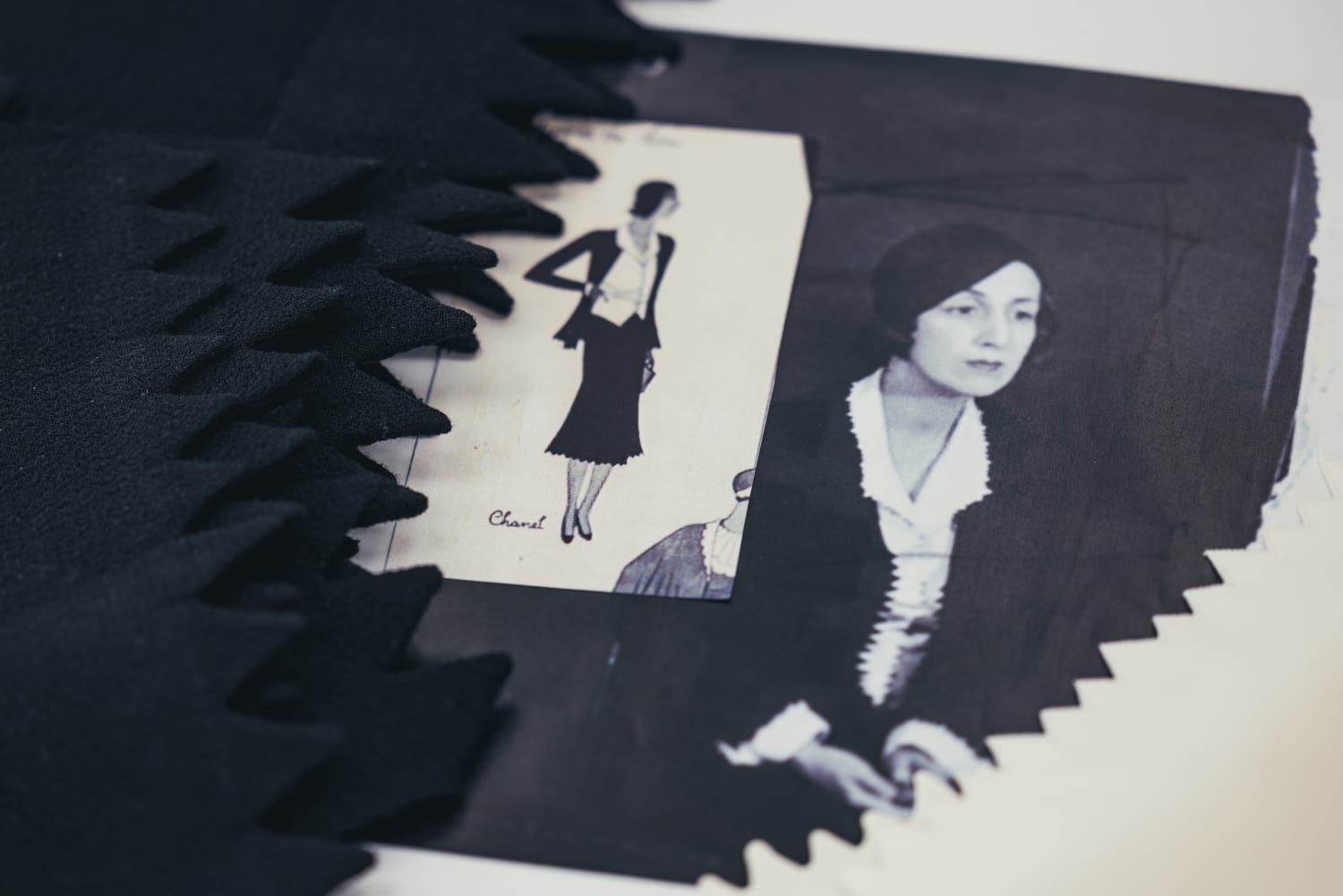
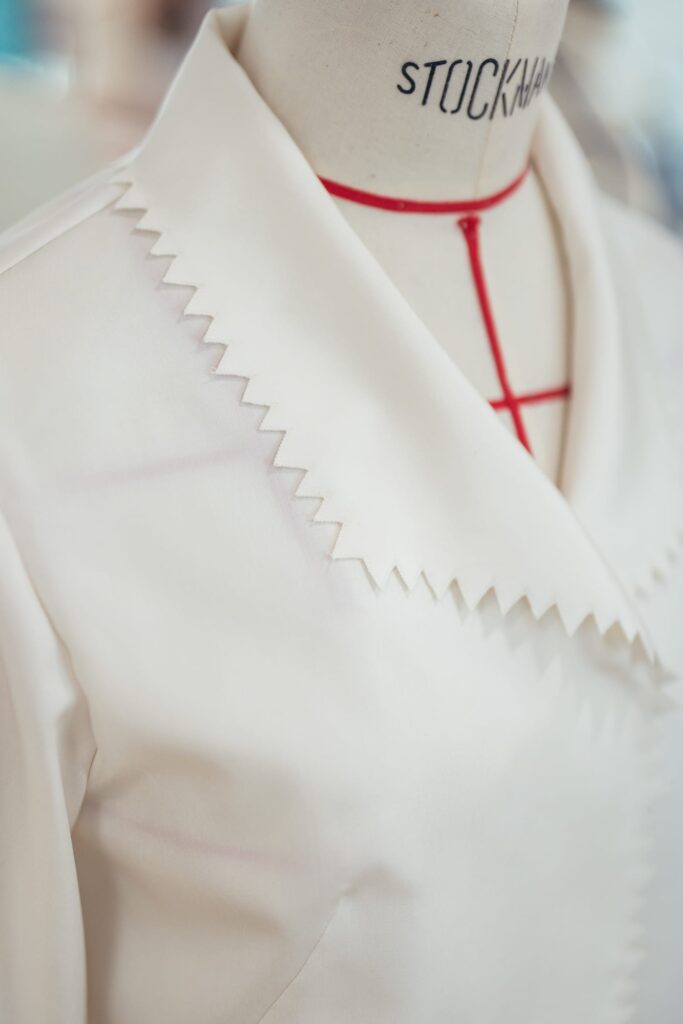
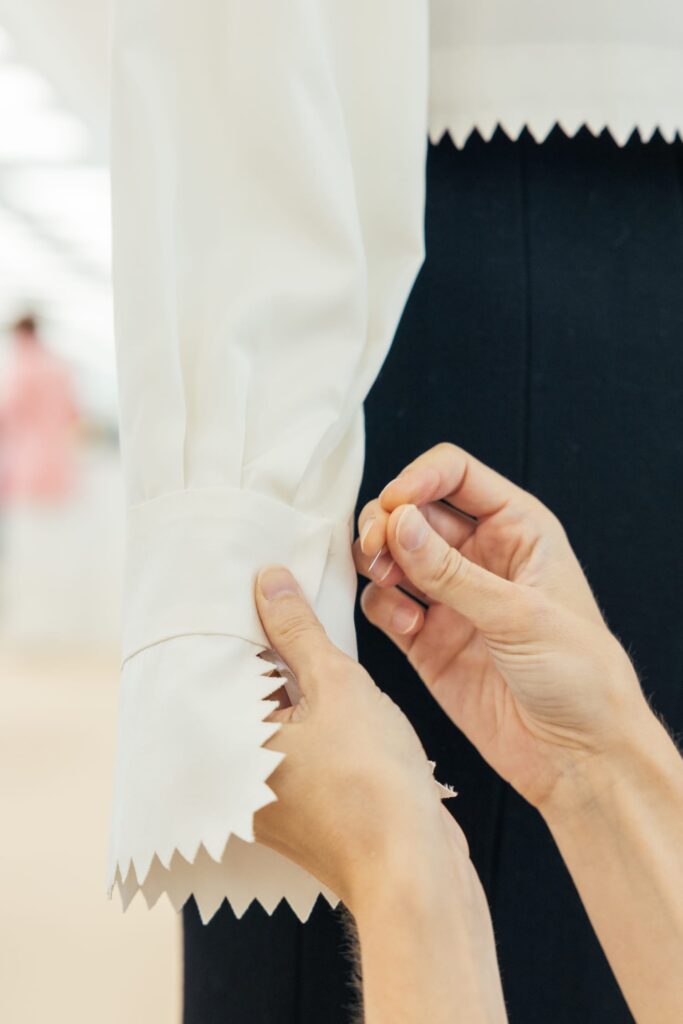
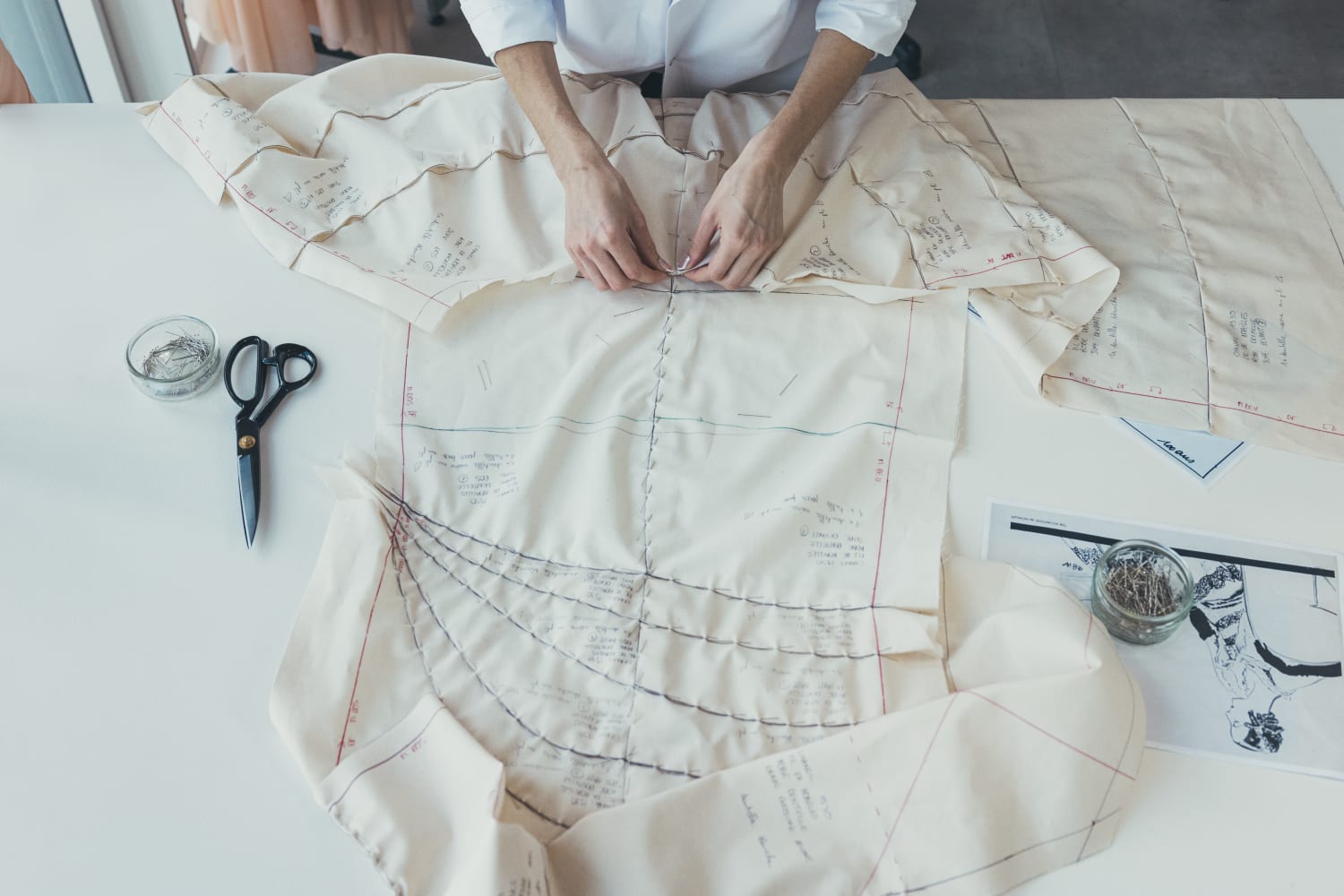
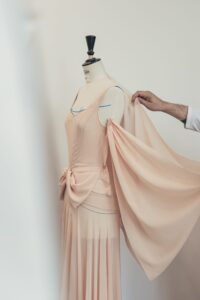
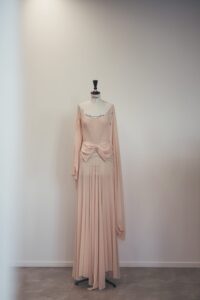
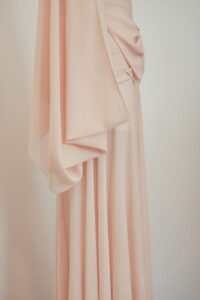
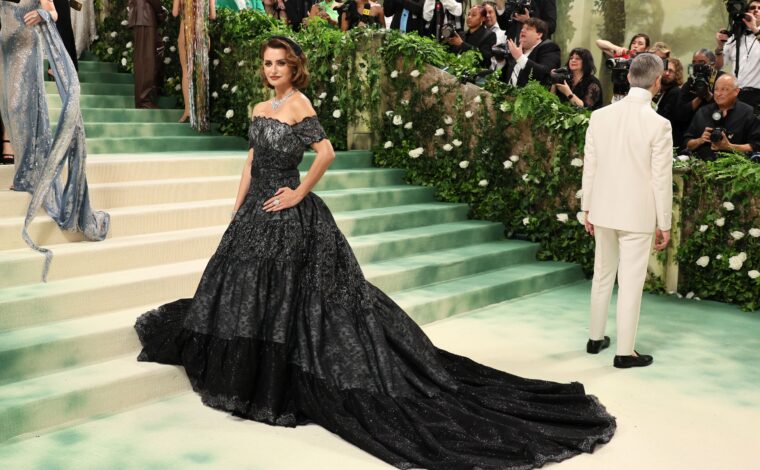
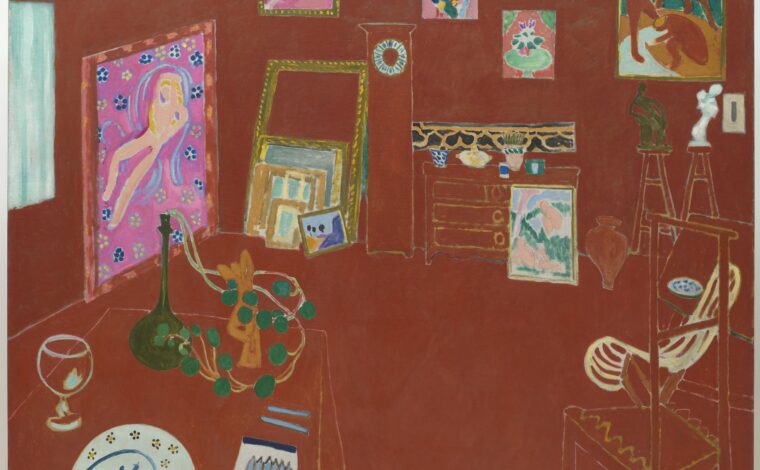
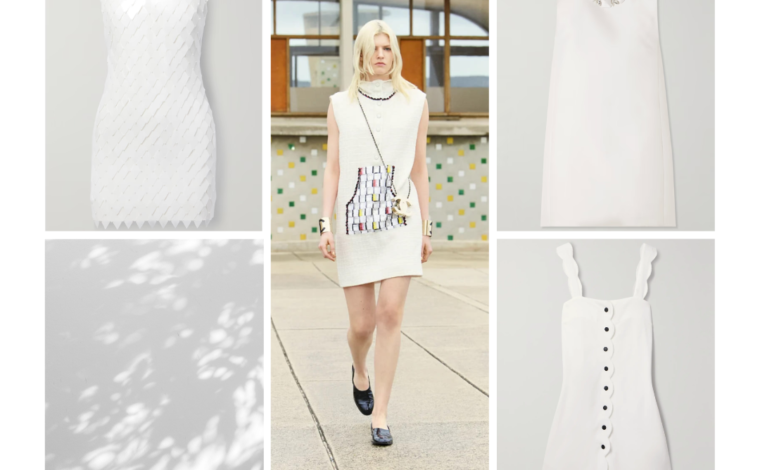
Comments are off this post!